風合睦晨空間設(shè)計 | 北京陽光城溪山悅Hygge藝術(shù)生活館
“見山是山,見水是水;見山不是山,見水不是水;見山只是山,見水只是水”。 ——青山惟政禪師(宋)
“I saw mountains as mountains and rivers as rivers. Then I saw mountains not as mountains and rivers not as rivers. Now I see mountains once again as mountains and rivers once again as rivers.” — Zen Master Qingshan Weizheng (Song dynasty)
距離北京城區(qū)以北80公里的溪翁莊環(huán)境優(yōu)美,占據(jù)著得天獨厚的山水資源。云蒙山、云佛山、燕山山脈三山環(huán)抱,白河、潮河兩河環(huán)繞,緊鄰密云水庫,地處密云生態(tài)涵養(yǎng)圈,周邊濕地環(huán)繞整個的項目地。具有觀景臺功能的7層24米高的Hygge.藝術(shù)生活館,被作為陽光城的永久業(yè)主會所,可以鳥瞰和縱覽整個地域的山林丘壑以及漫坡溪谷。
Xiwengzhuang, located eighty kilometers north from downtown Beijing, is a beautiful town endowed with unrivaled natural resources and abundant mountains and rivers. Sitting among Mts. Yan, Yunmeng and Yunfo’s embrace, the town straddles Bai and Chao Rivers. It is adjacent to Miyun Reservoir and falls within the eponymous ecological conservation area, completely surrounded by vast wetlands. The Hygge Art and Lifestyle Center, seven stories and two dozen meters high, serves as a permanent activity center for Yango property owners and promises a panoramic view full of the region’s lush slopes and clear streams.
▼室內(nèi)概覽
空間將圖書館、社區(qū)客廳,茶室、藝術(shù)山居客房以及星象觀測露臺等功能設(shè)置其中。在這里輕松閱讀、知己傾談、找尋詩意靈感…寄情于此處的藝術(shù)山居。用最自然的方式,將當?shù)靥赜械淖匀痪坝^感受由外及里地傳達給置身于空間中的每一個人。
The spatial environment can serve as a library, a community space, a tea house, a guest facilities of apicturesque mountain dwelling and a stargazing terrace. Here, you may find your mind wandering the pages of a book, exchanging in intimate talks with friends or pursuing poetic inspiration. This aesthetic mountain abode is always ready for the fluttering of the heart. The designers aims to use the interior furnishing to bring in the natural allure generated by the region’s unique landscape, allowing any and all visitors to experience the picturesque scenery indoors.
▼進入具有縱深感的立體空間
結(jié)合當?shù)靥厥獾牡赜蛏剿O(shè)計師把解構(gòu)山體的意象觀念導入整個室內(nèi)空間,營造極具當代藝術(shù)特色的“文化山水空間”。以解構(gòu)主義手法從自然界中的物體中提煉造型語言,打造“見山是山,見水是水;見山不是山,見水不是水”的現(xiàn)代禪境。而這種設(shè)計語言的運用尤以圖書館區(qū)域部分體現(xiàn)得最為充分。
Harnessing the advantages of this very landscape, the two designers decorated the entire interior with deconstructed mountain imagery and created a “cultural landscape space” with strong contemporary artistic features. Extracting the modeling language from the objects in nature by means of deconstruction, they refined a unique shaping language, which they then used to create a modern Zen realm — a place where one sees mountains as mountains and rivers as rivers before perceiving mountains not as mountains and rivers not as rivers. The library is the best demonstration of this design language.
▼通高的大廳
▼書架呼應(yīng)著窗外景觀
▼閱讀空間與候梯空間相結(jié)合
設(shè)計師的設(shè)計靈感來源是從一款名叫Minecraft“麥塊”的沙盒游戲(Sandbox Games)中取得的,他們希望空間體驗者能夠像游戲玩家一樣可以在一個隨機程序生成的3D世界中,以立方體組合為基礎(chǔ)進行游戲。空間的組成像是讓人們進行一場三維空間的新奇探索與旅行,高高低低、起起伏伏、迭迭回回,暢游其中,體味到猶如身處山體洞穴般的獨特感受。
The designers took their inspiration from Minecraft, the famous sandbox video game. The designers play with block-like cubes to create most of the objects in the space, inviting visitors to a randomly generated 3D environment. The rising, falling, twisting and turning of these cubes create a unique aesthetic experience of wandering leisurely within a mountain cave.
▼一層閱讀空間
由立方體塊隨機組合而成的像素風景,與建筑外部的自然景觀,形成視覺圖像的關(guān)聯(lián)。起伏流動的外部山水自然地流入建筑內(nèi)部,以別樣的組合方式和獨特感受讓人們的思緒瞬間的從現(xiàn)實世界中得以抽離出來,進入到意識層面的、抽象的、幾何的和人性化的空間中,體味到時空流轉(zhuǎn)、由外及內(nèi)地心靈感受的微妙反差,重新構(gòu)筑拓展出全新的心理性的空間體驗感受。像素體塊的組合、建構(gòu)與派生,一切都發(fā)生在由立方體構(gòu)成的三維網(wǎng)格中,隨手而變,任心所成。
The pixel-like landscape formed by random combinations of cubes visually connects with the natural scenery outside the building. Mountains and rivers extend into the structure in such a seamless way that the whole process creates unique combinations and incites distinct feelings. Upon encountering this, visitors are set free from their real-world and become fully embraced by a conscious, abstract, geometric and humanized space. They feel the changes of space and time, capture the subtle differences between internal and external feelings and finally become able to reestablish and expand upon a completely new, spatial experience from a more psychological perspective. The combination, construction and derivation of pixel blocks all take place in a three-dimensional grid of cubes. They reflect the free-flowing creativity and burst of inspiration of the designers.
▼二層空間
中國傳統(tǒng)山水畫強調(diào)“畫為心印”,畫中山水并非畫者單純地對自然山水的客觀描摹,而是以意馭物,體悟到山水之境后釋放和表現(xiàn)出來自身的生命氣息以及心靈感悟。 “宇宙便是吾心,吾心即是宇宙” (宋,陸九淵)。起伏的立方體構(gòu)筑的虛擬意象山體曲線與窗外現(xiàn)實世界的山體曲線形成潛在的對應(yīng);而起伏的立方體構(gòu)筑的意象山體曲線又與人們的心緒和生命曲線形成潛在的對應(yīng);三者彼此虛實呼應(yīng),意在有無之間、意在遠近之間,意在似與不似之間。
As emphasized in traditional Chinese landscape paintings, “A painting reflects its painter’s mind.” Far from merely representing the natural mountains and rivers, painters transform objects with their intent, immerse themselves in nature and then channel their vitality and sentiments as gained throughout such a process. “The universe is my mind, and my mind is the universe,” stated Lu Jiuyuan (Song dynasty). The sunken and floating cubes create a virtual rolling of mountains, able to echo the rippling ranges outside as well as the twists and turns of one’s spiritual and sentimental experiences. These three aspects, virtual or otherwise, are both there and intangible, far out but close by, seemingly identical yet markedly different.
▼起伏的天花板,
心有所主,則山水有形。原木材質(zhì)的運用帶給人們心靈上得以撫慰的真切感受,暢游于現(xiàn)實與意象山水之間,整個公共屬性的空間如同一個記憶的容器,收納著流轉(zhuǎn)不定的光陰,收納著歲月不居的時節(jié),也收納著造物主賜予我們的那份美好、真誠與純凈。
The mountains and rivers here are formed by the whims of one’s own imagination. The art and lifestyle center was constructed using timber, a warm and earthy material to the hearts. Straddling the real and imaginary, this sloping and flowing public space serves as a vessel for memories — containing the ever variable light, the ceaseless passing of seasons and the beauty, sincerity and purity of our minds as bestowed by our almighty creator.
▼細部
項目名稱:北京陽光城溪山悅Hygge藝術(shù)生活館
副標題:流動的像素風景
空間設(shè)計:風合睦晨空間設(shè)計
設(shè)計師:陳貽 張睦晨
完工日期:2021年03月
撰文:陳貽
項目業(yè)主:陽光城地產(chǎn)
項目地址:北京密云
項目面積:1200平米
建筑設(shè)計:HZS 滙張思
攝影師:孫翔宇
主要材料:水泥自流平、白橡木木飾面、白橡木木地板、布拉格灰石材
更多相關(guān)內(nèi)容推薦


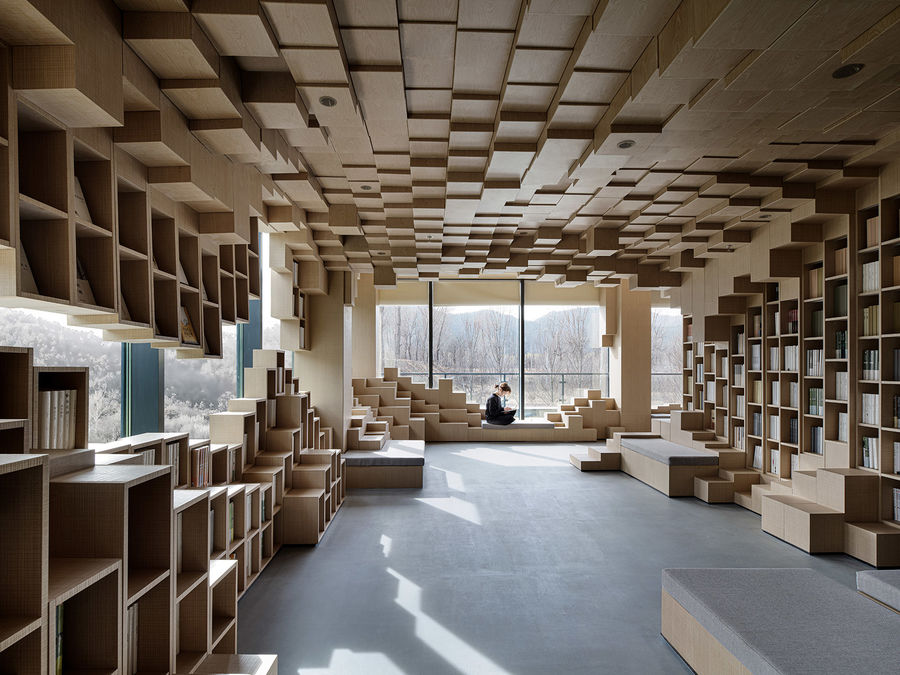
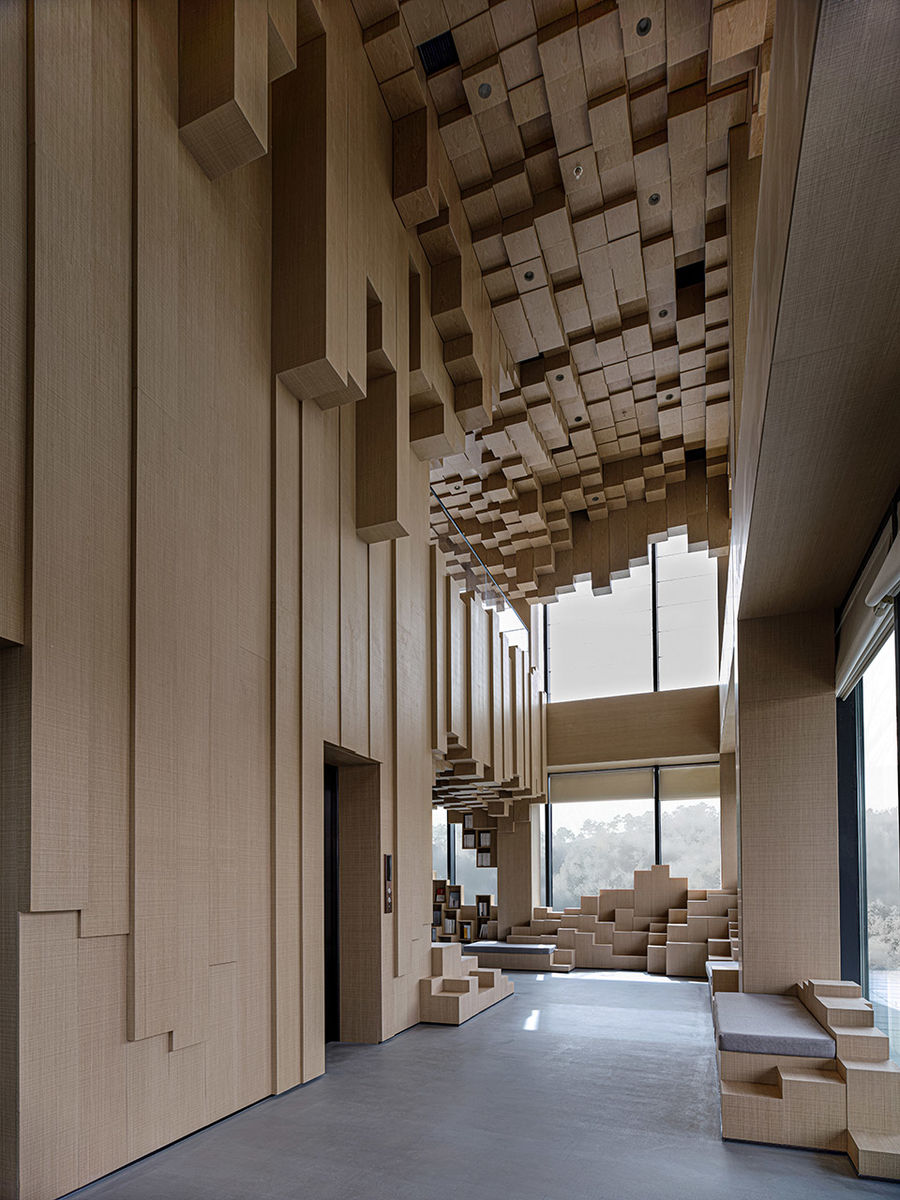
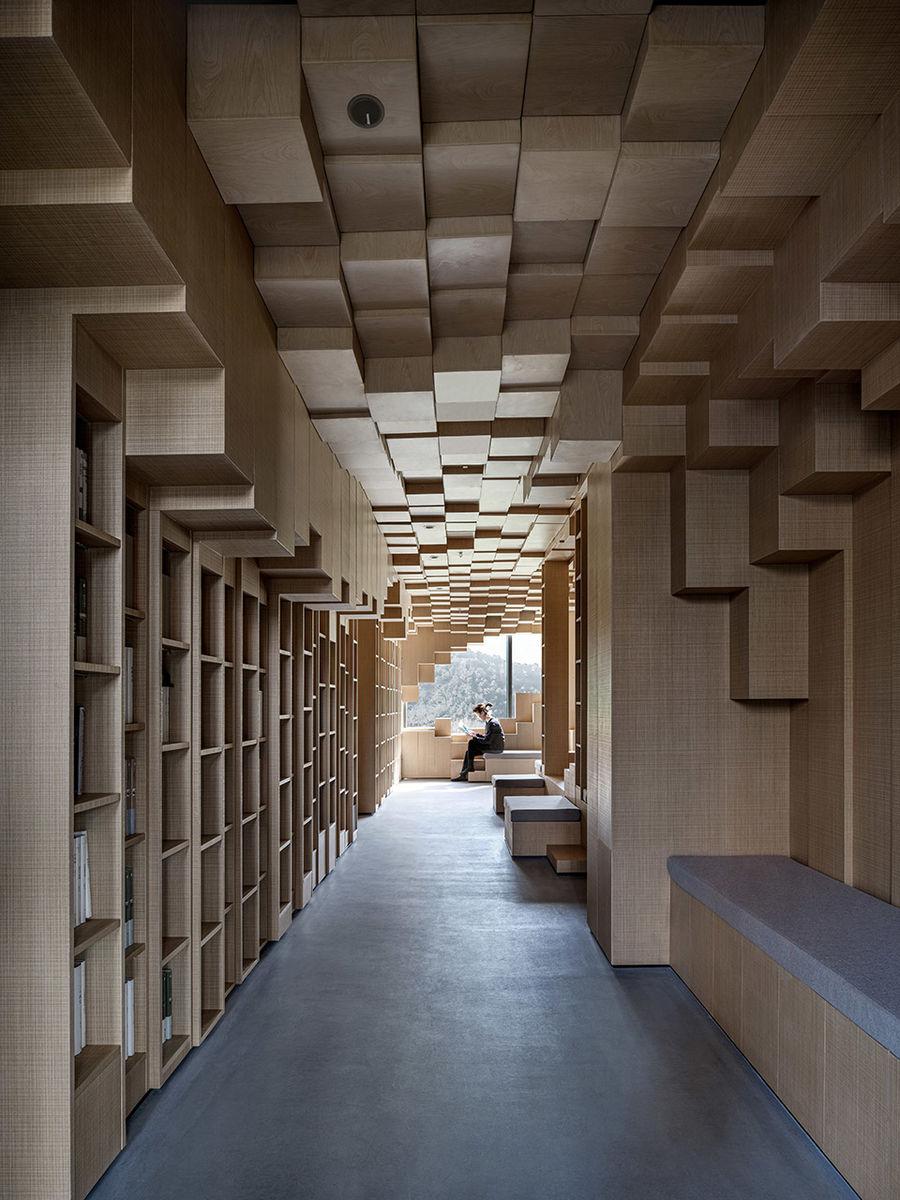
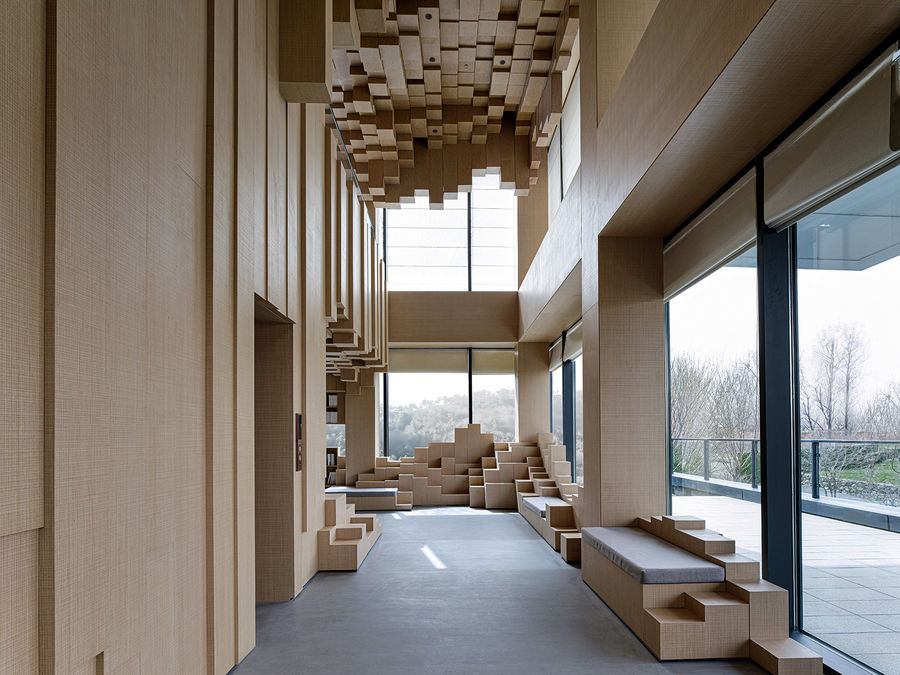
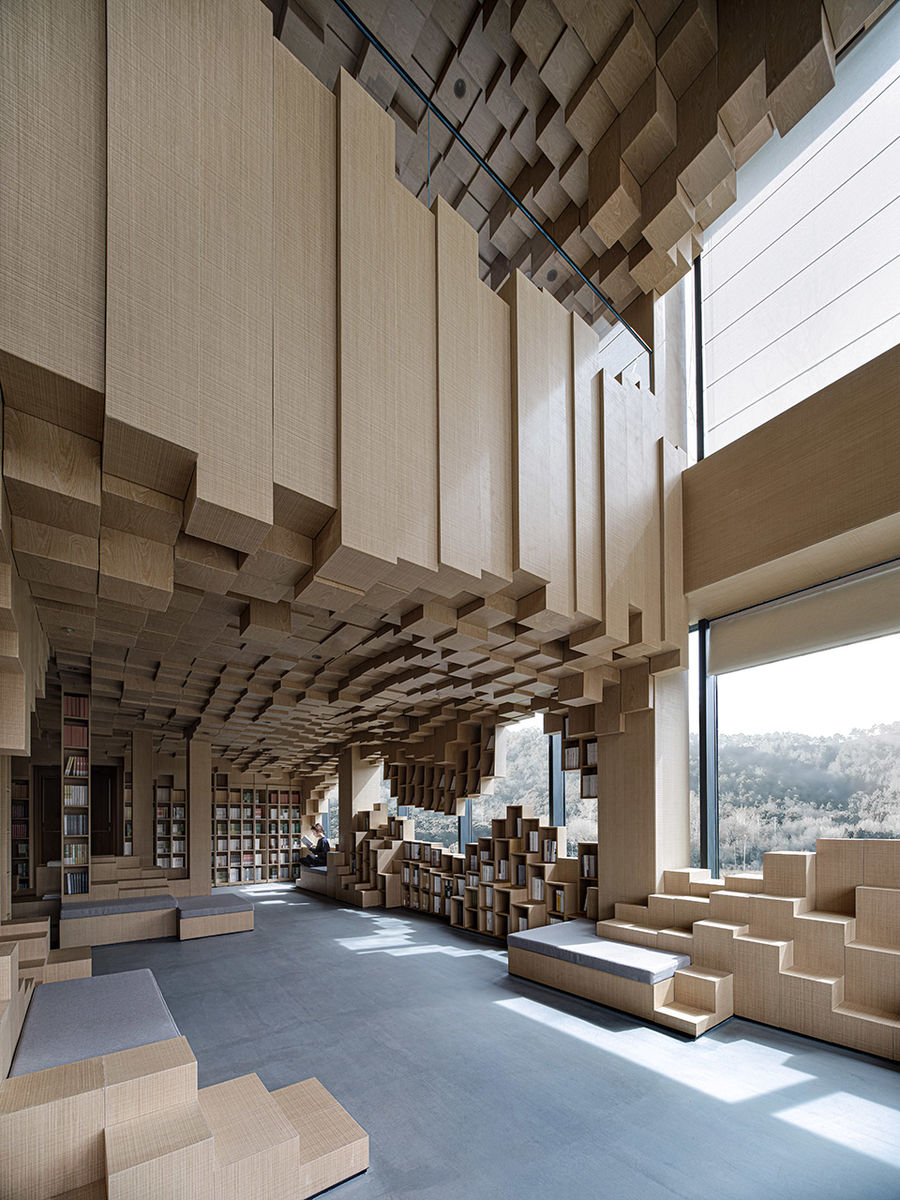
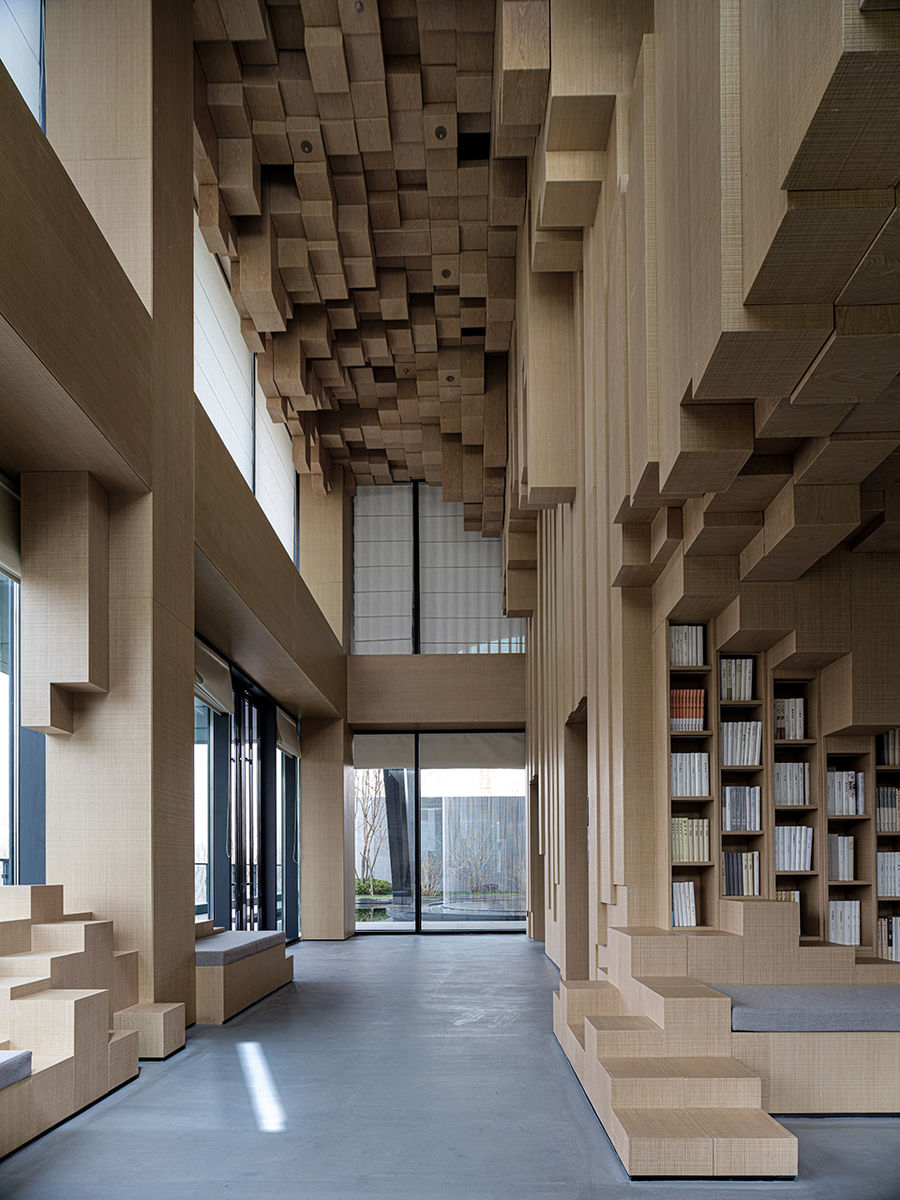
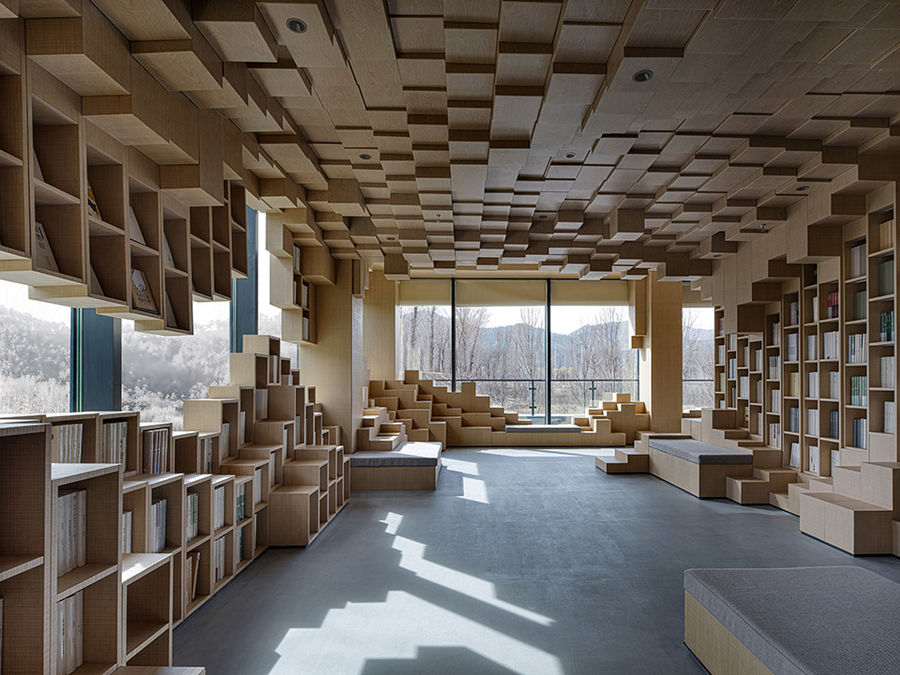
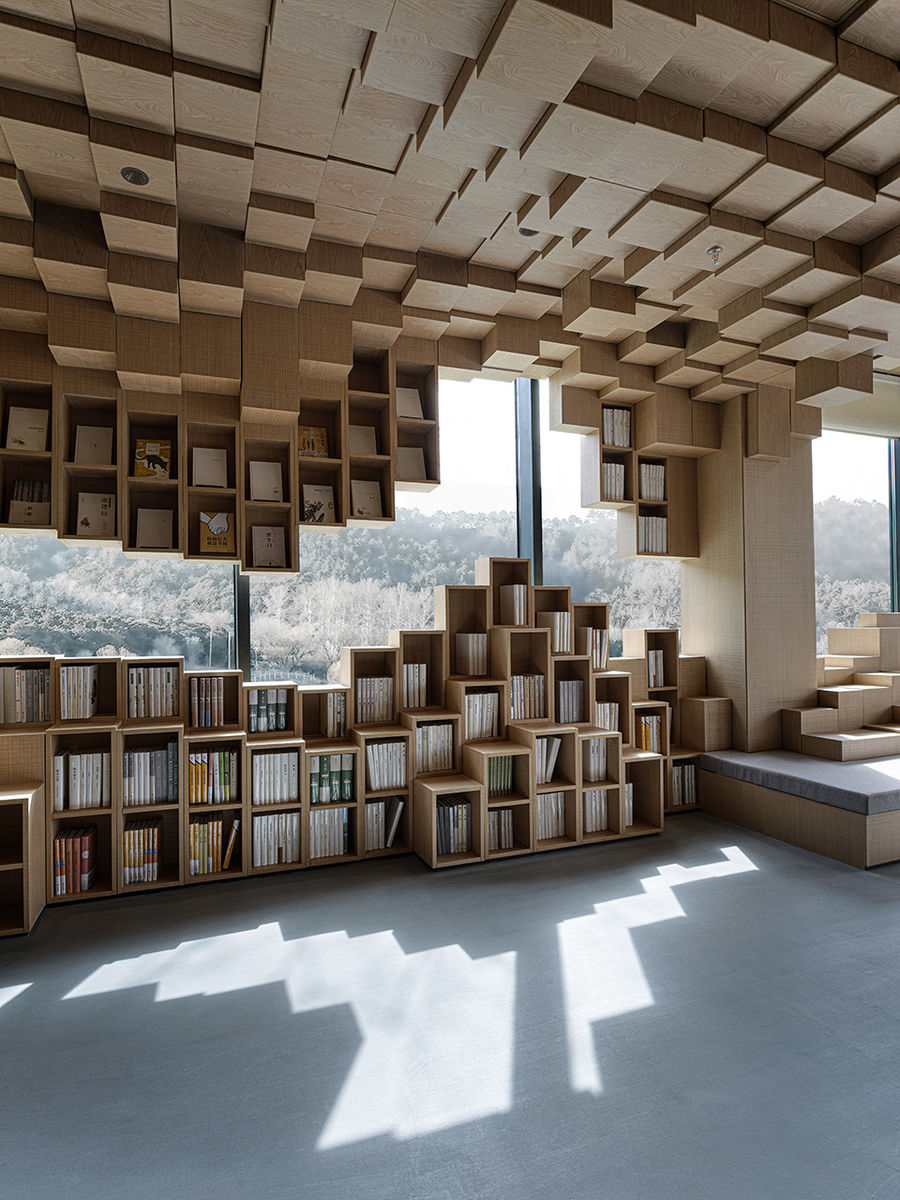
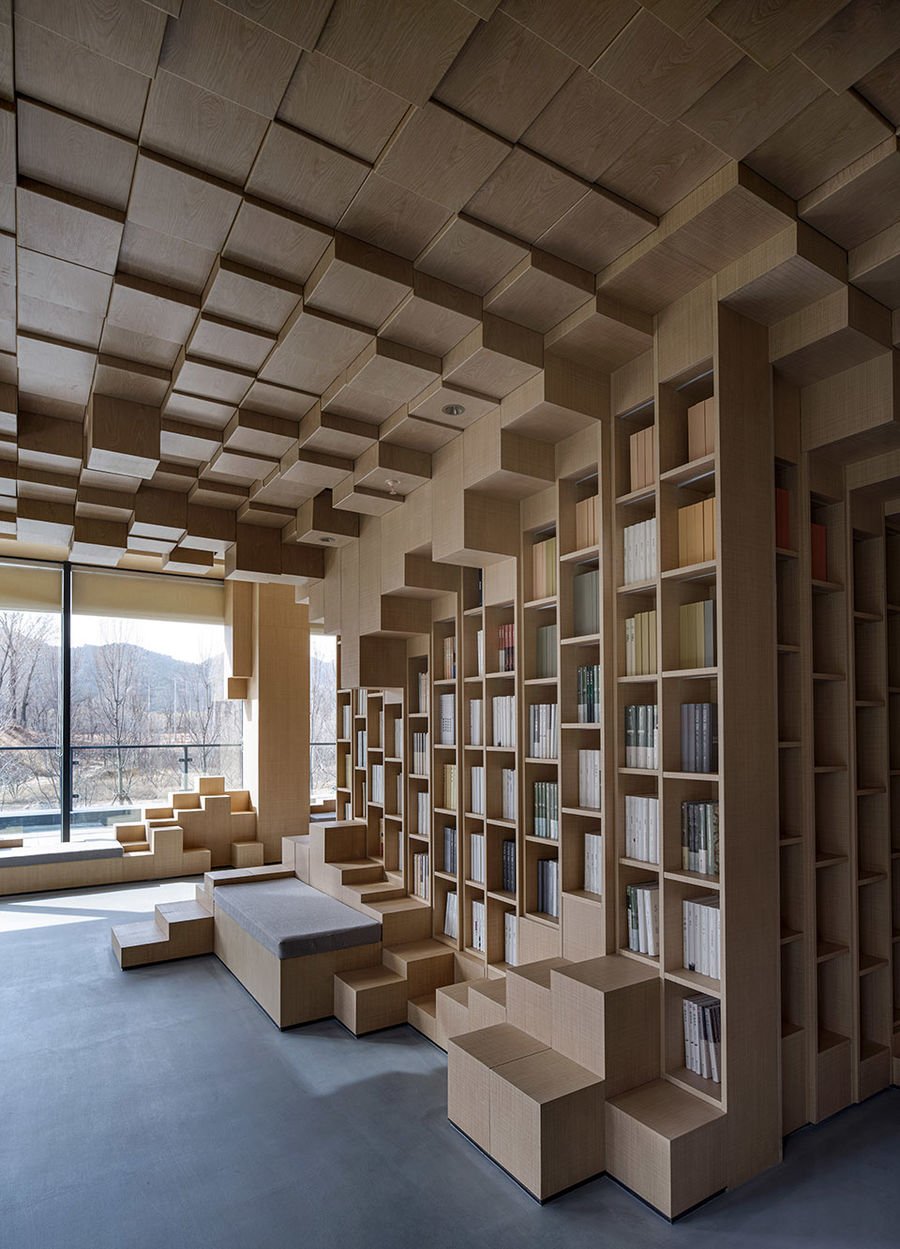
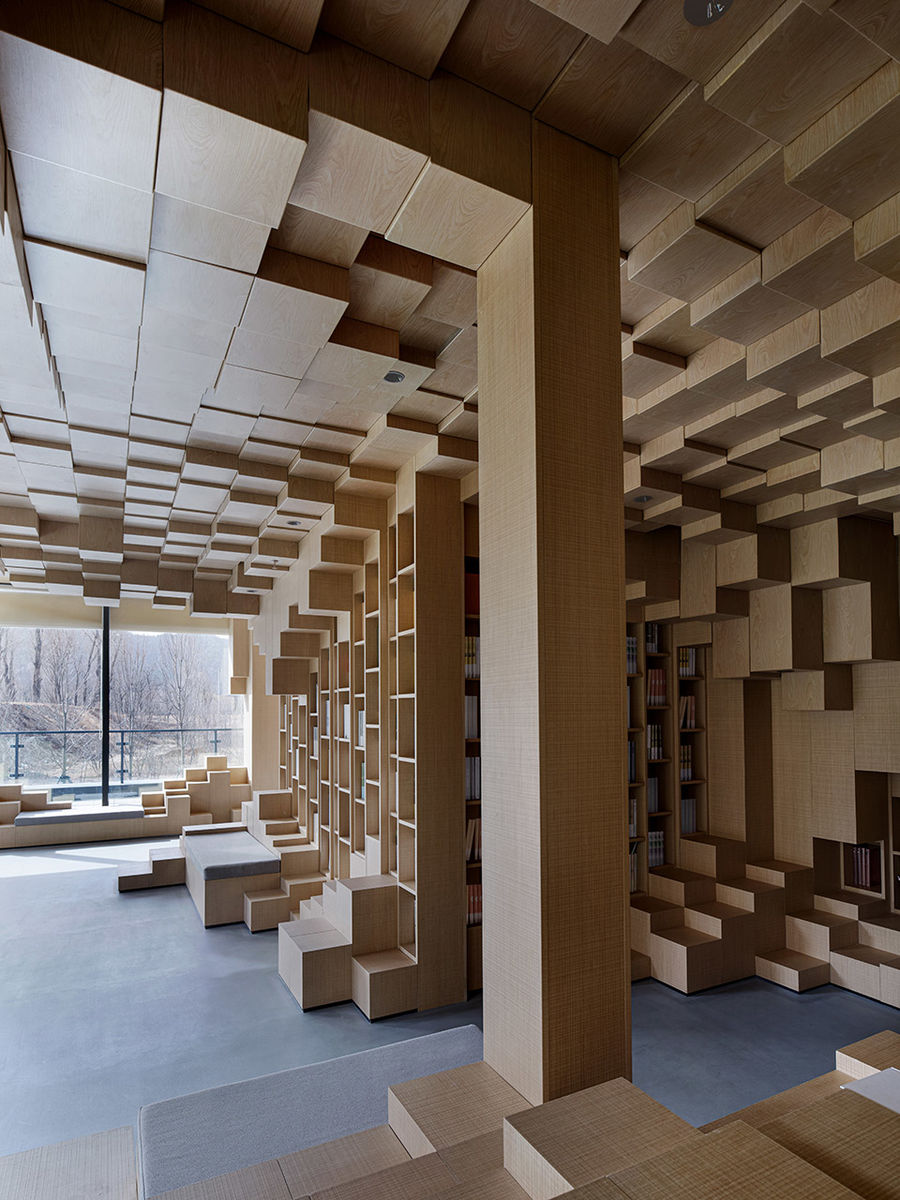
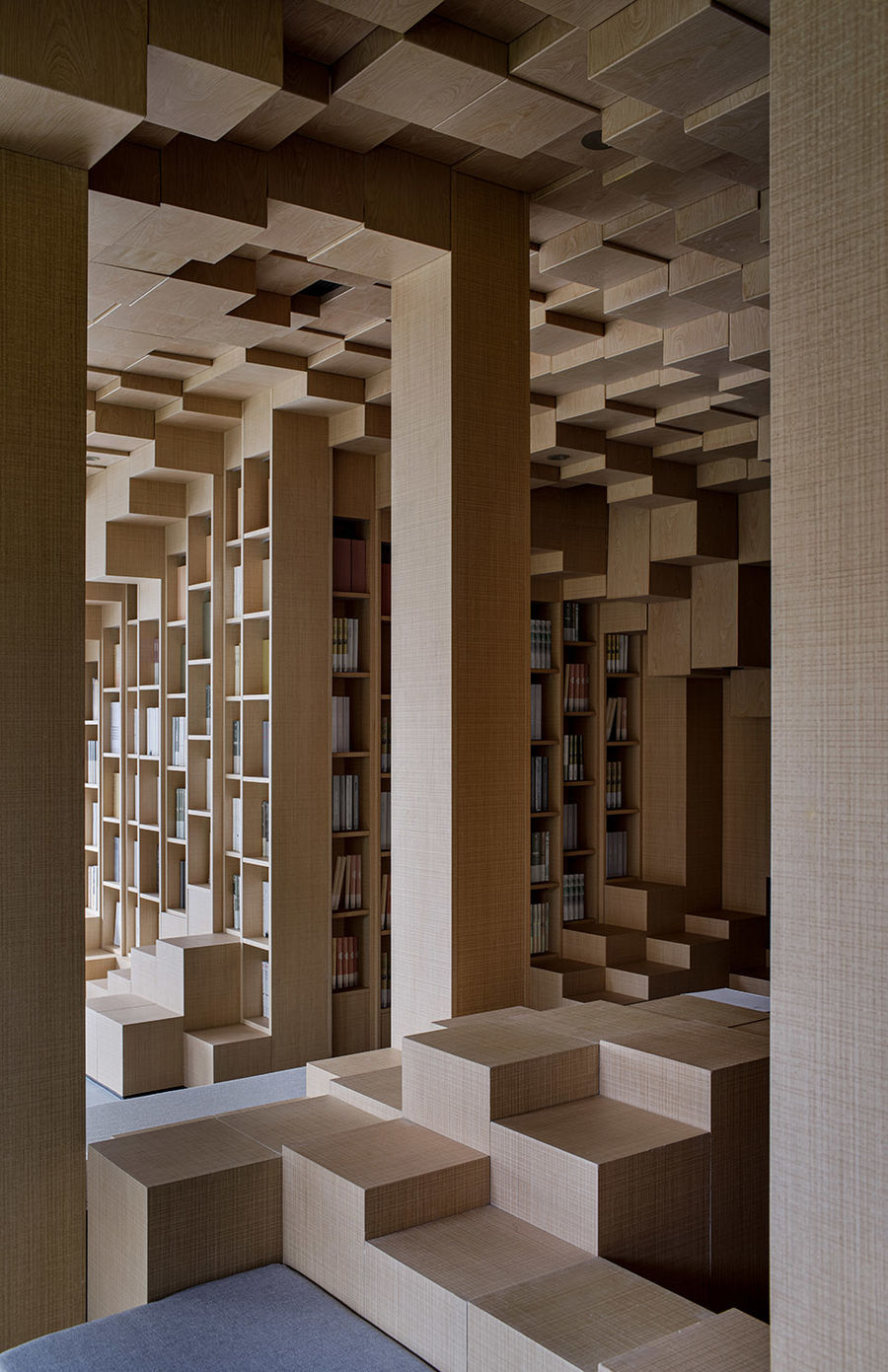
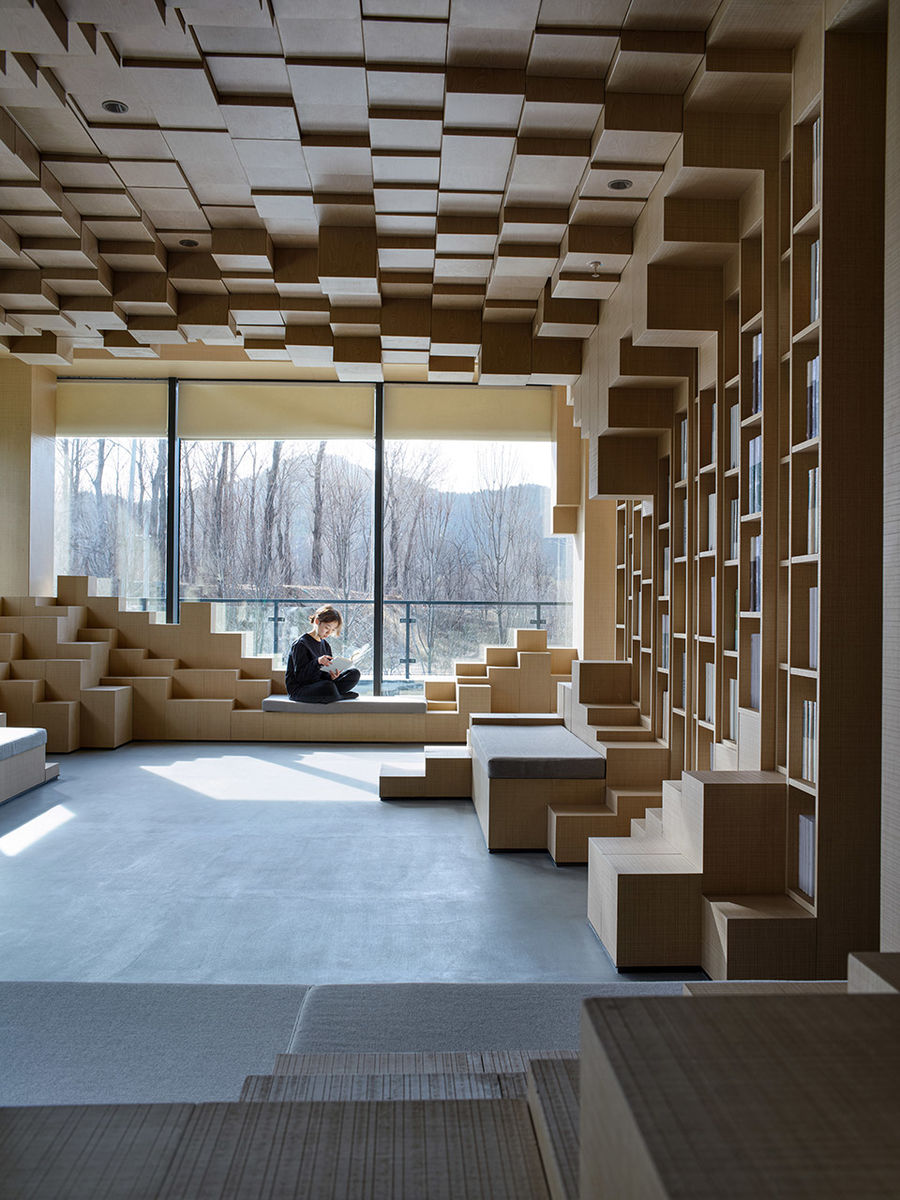
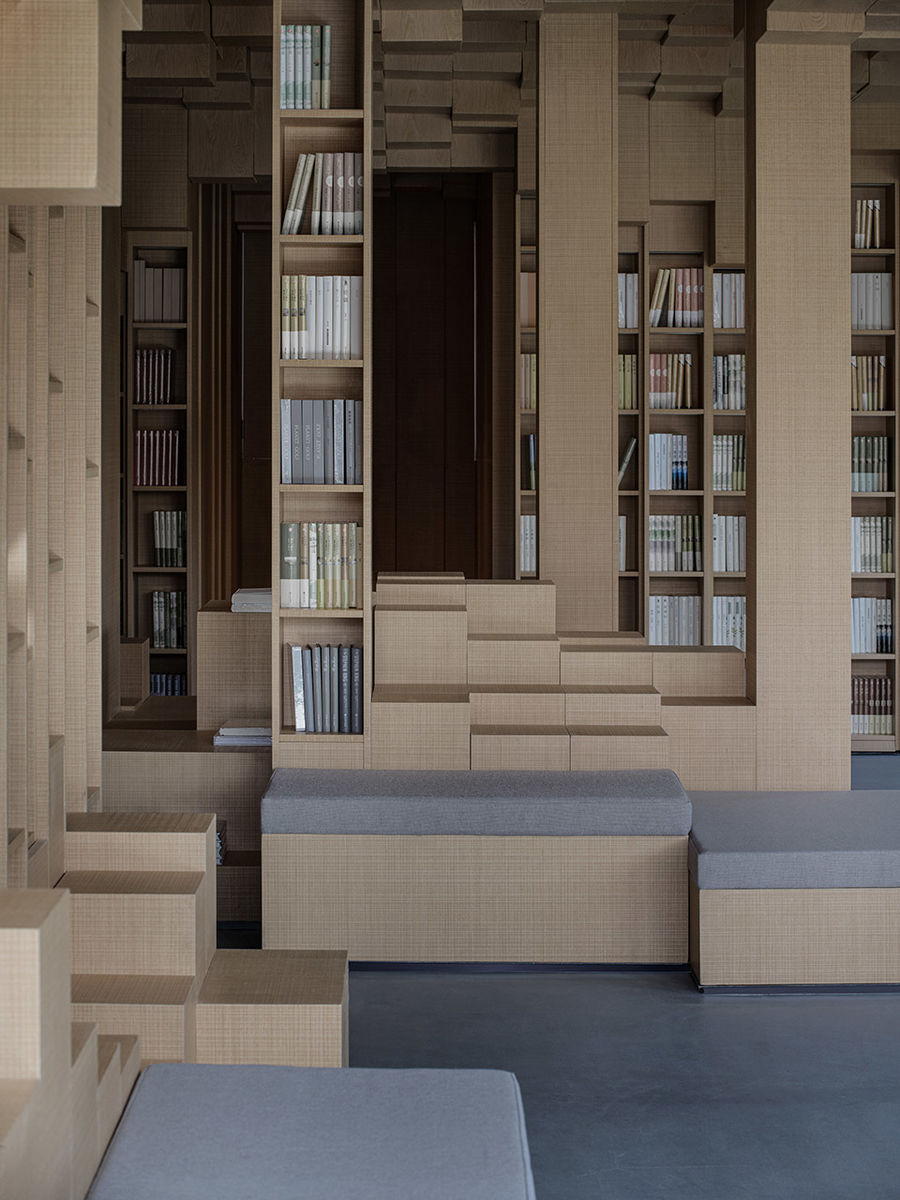
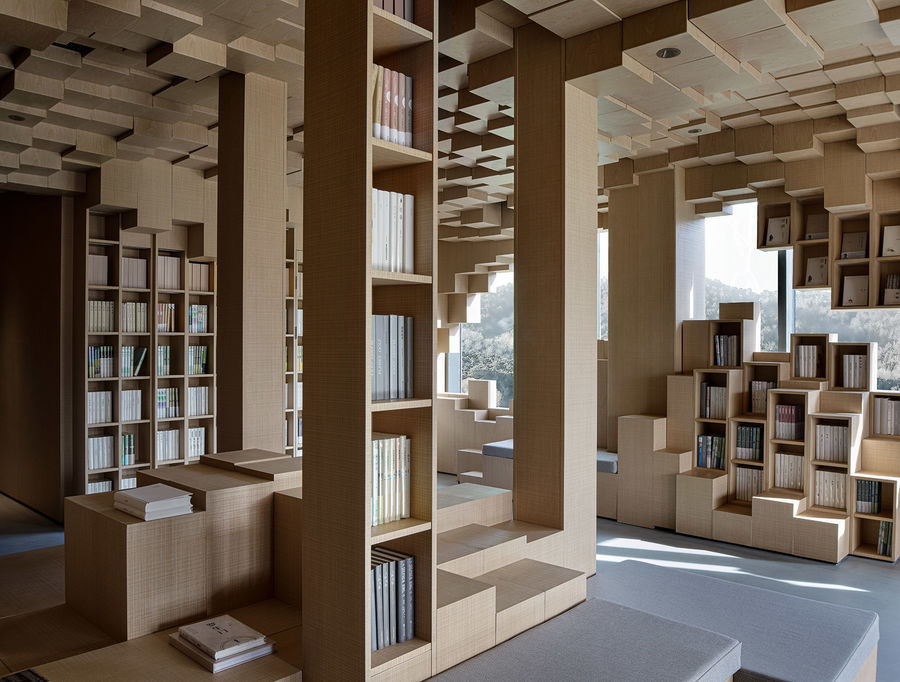
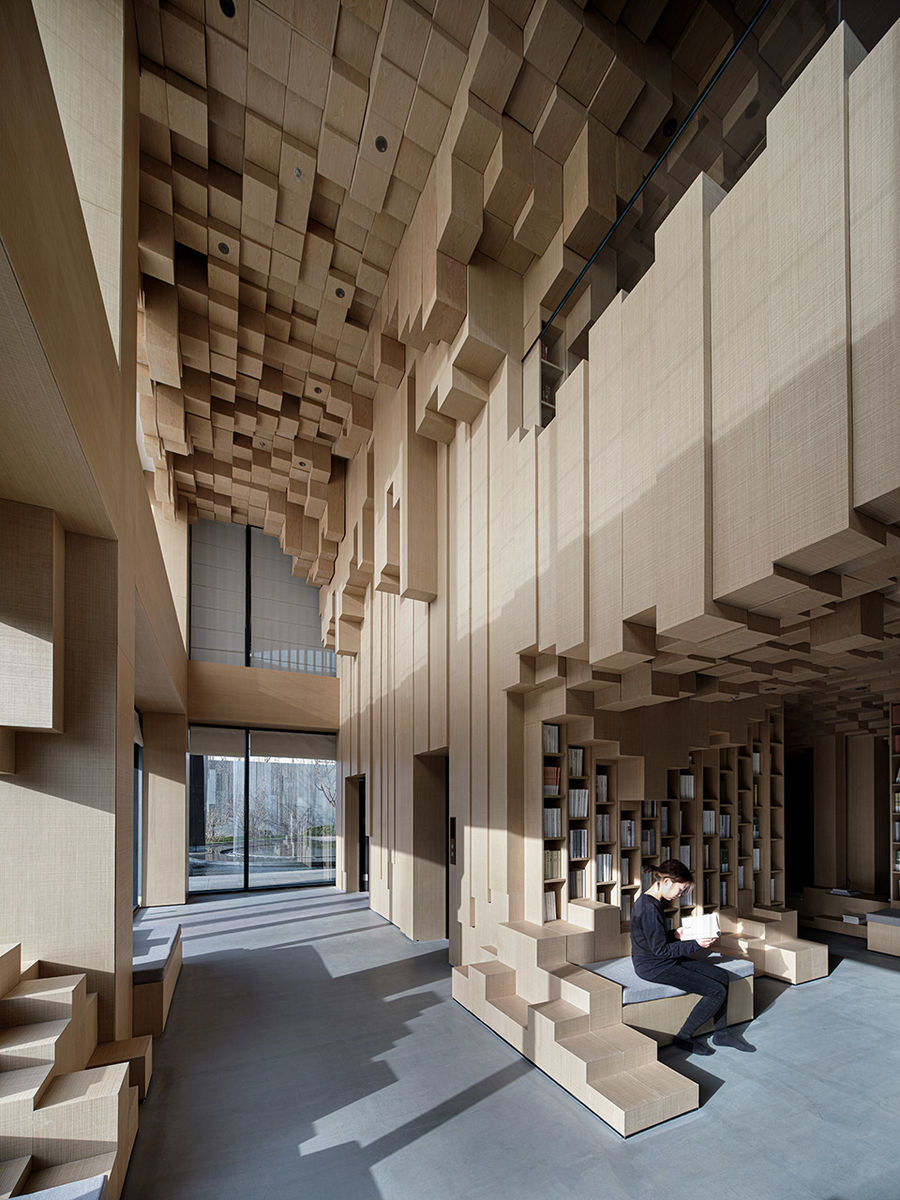
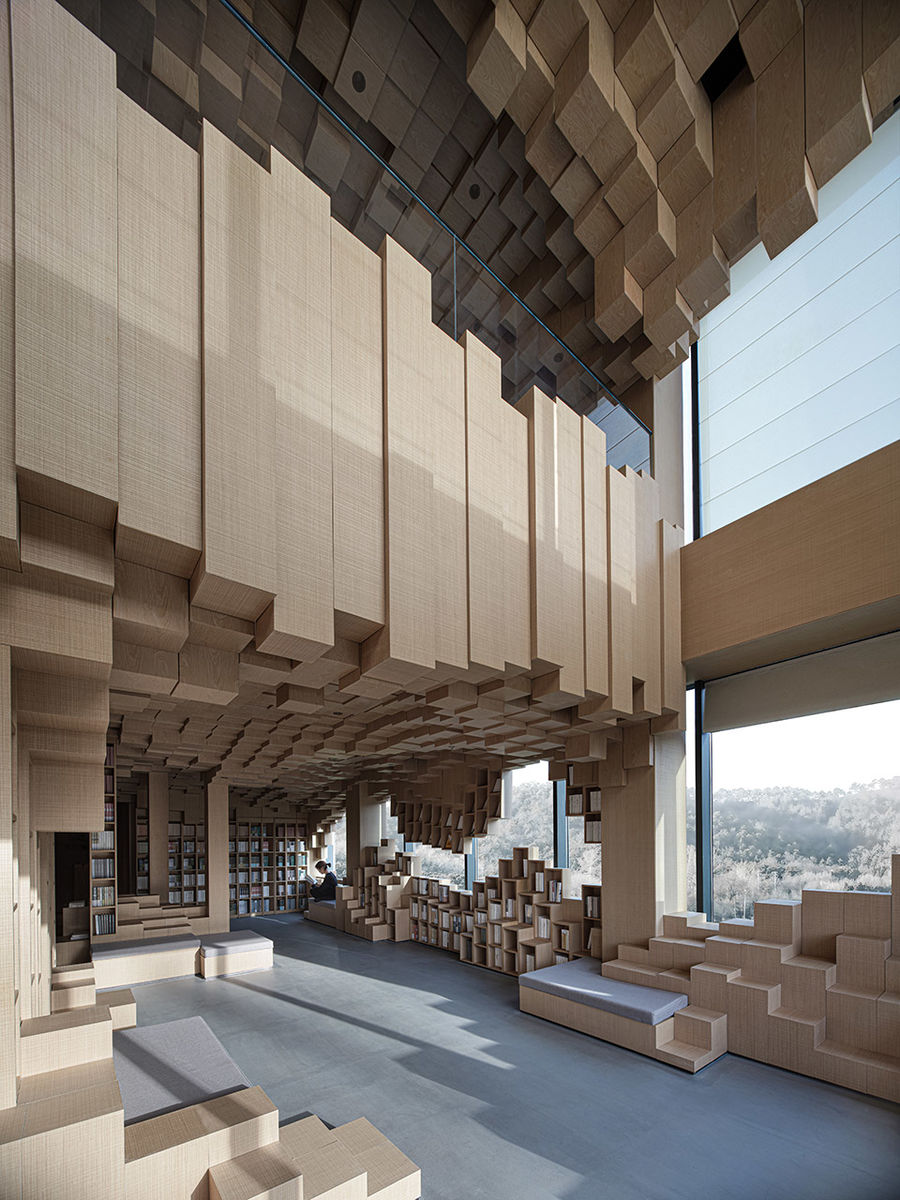
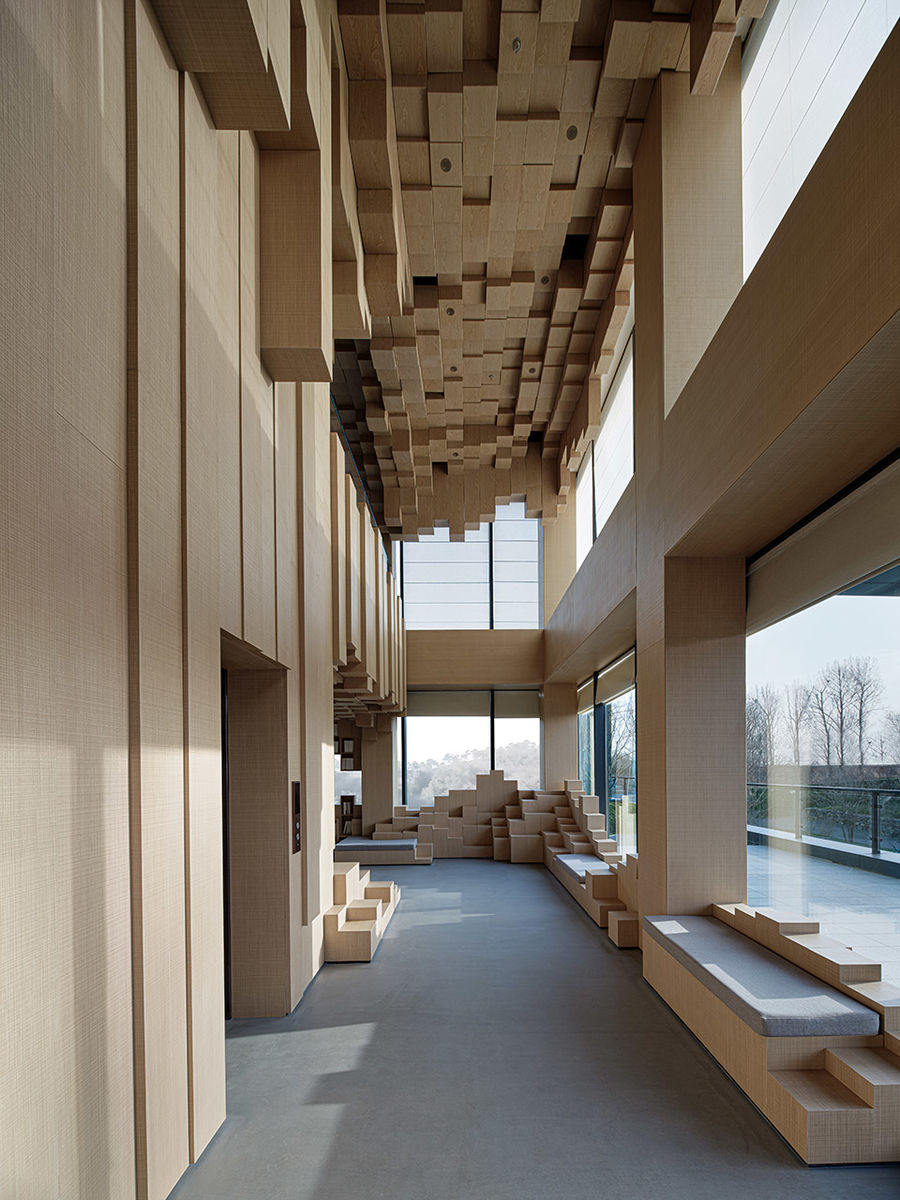
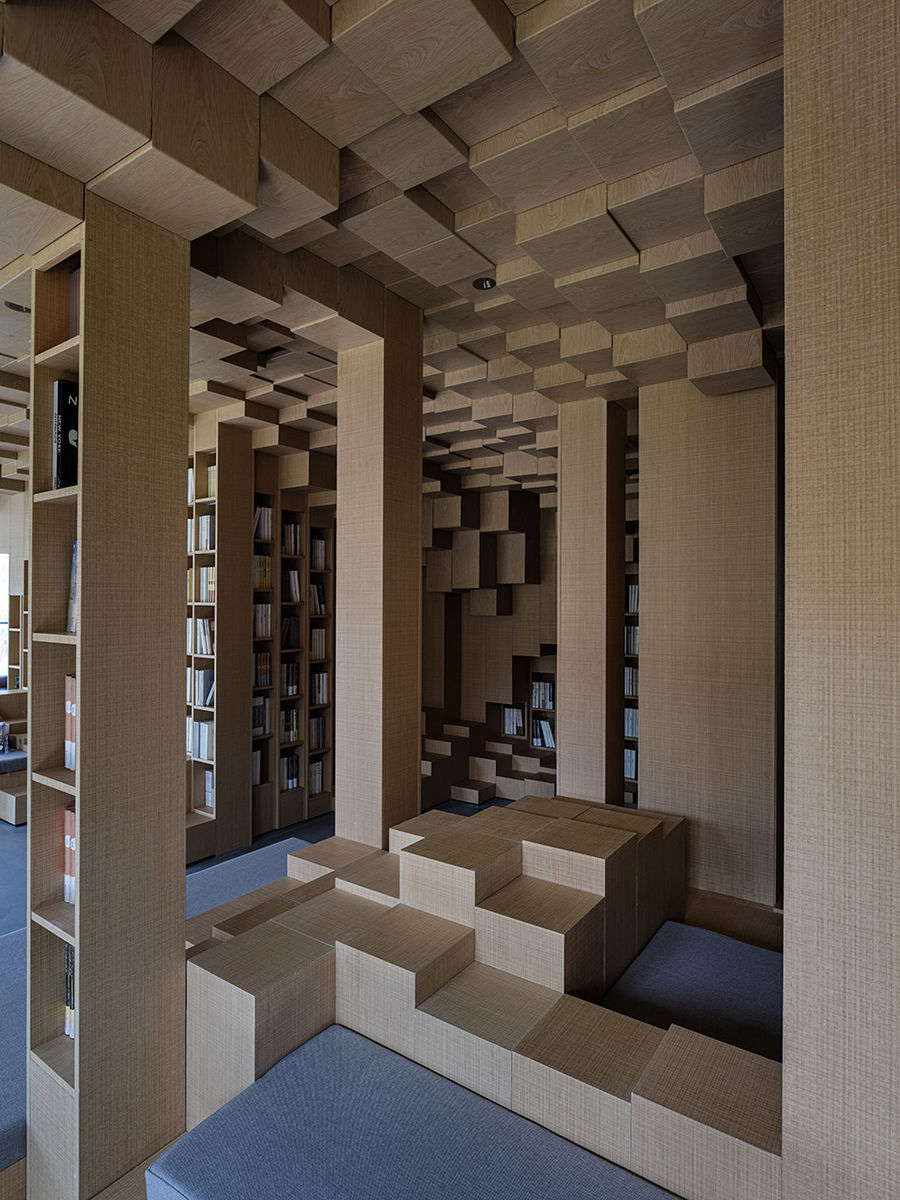
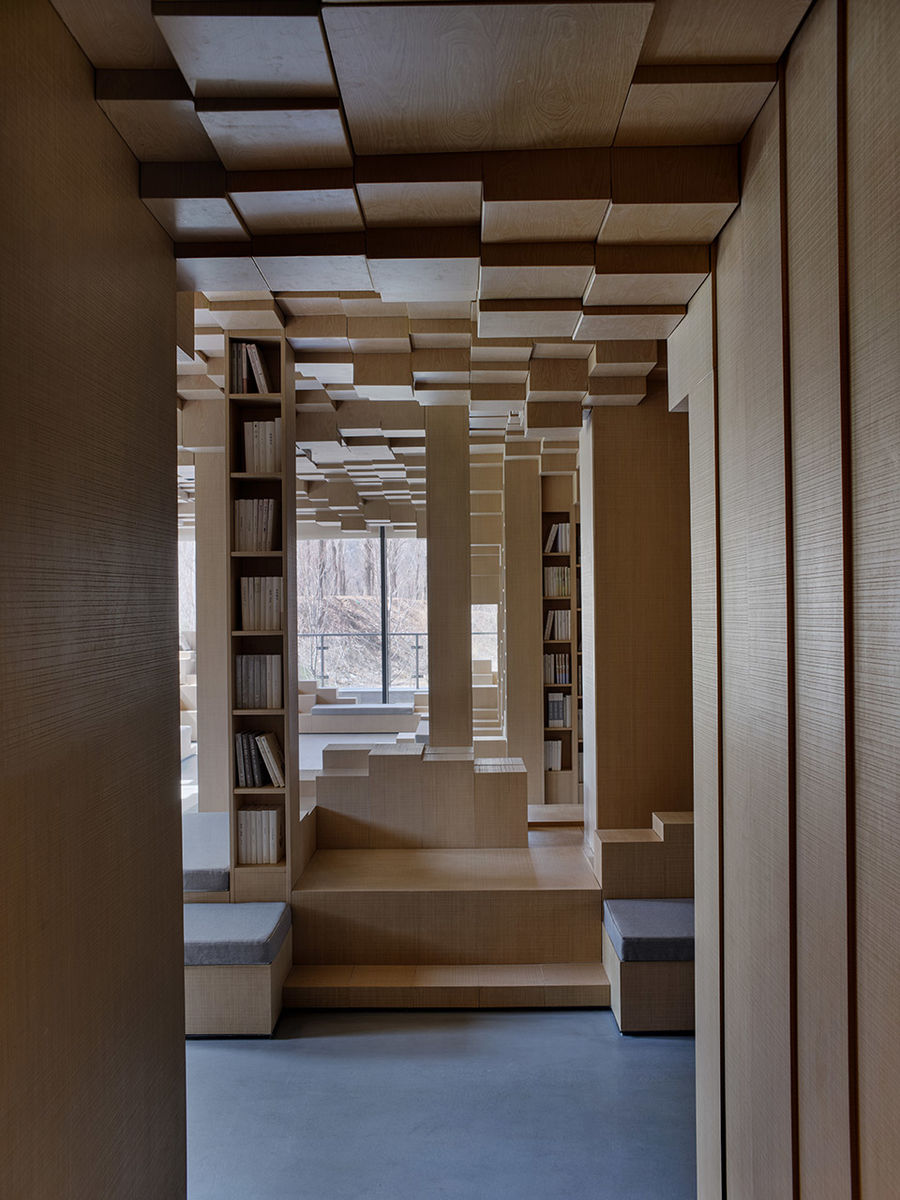
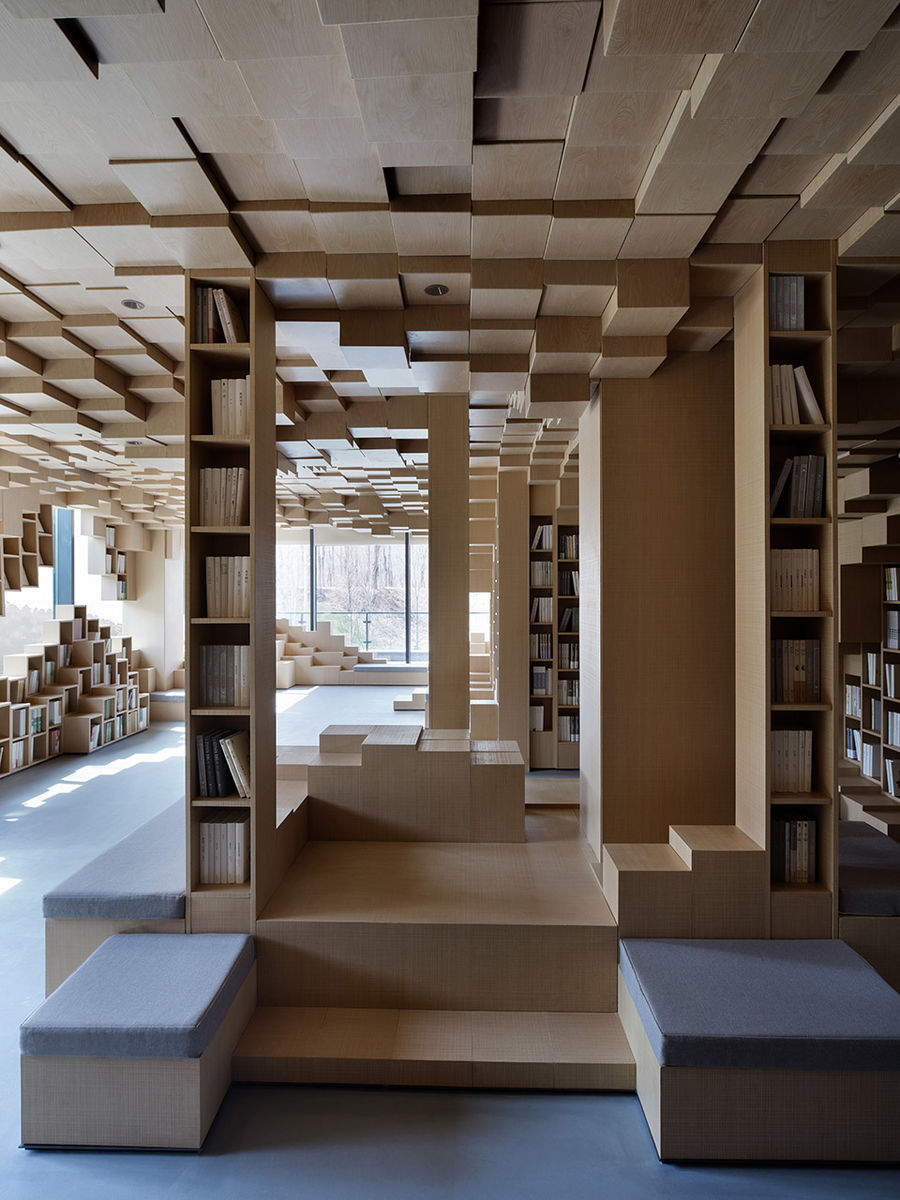
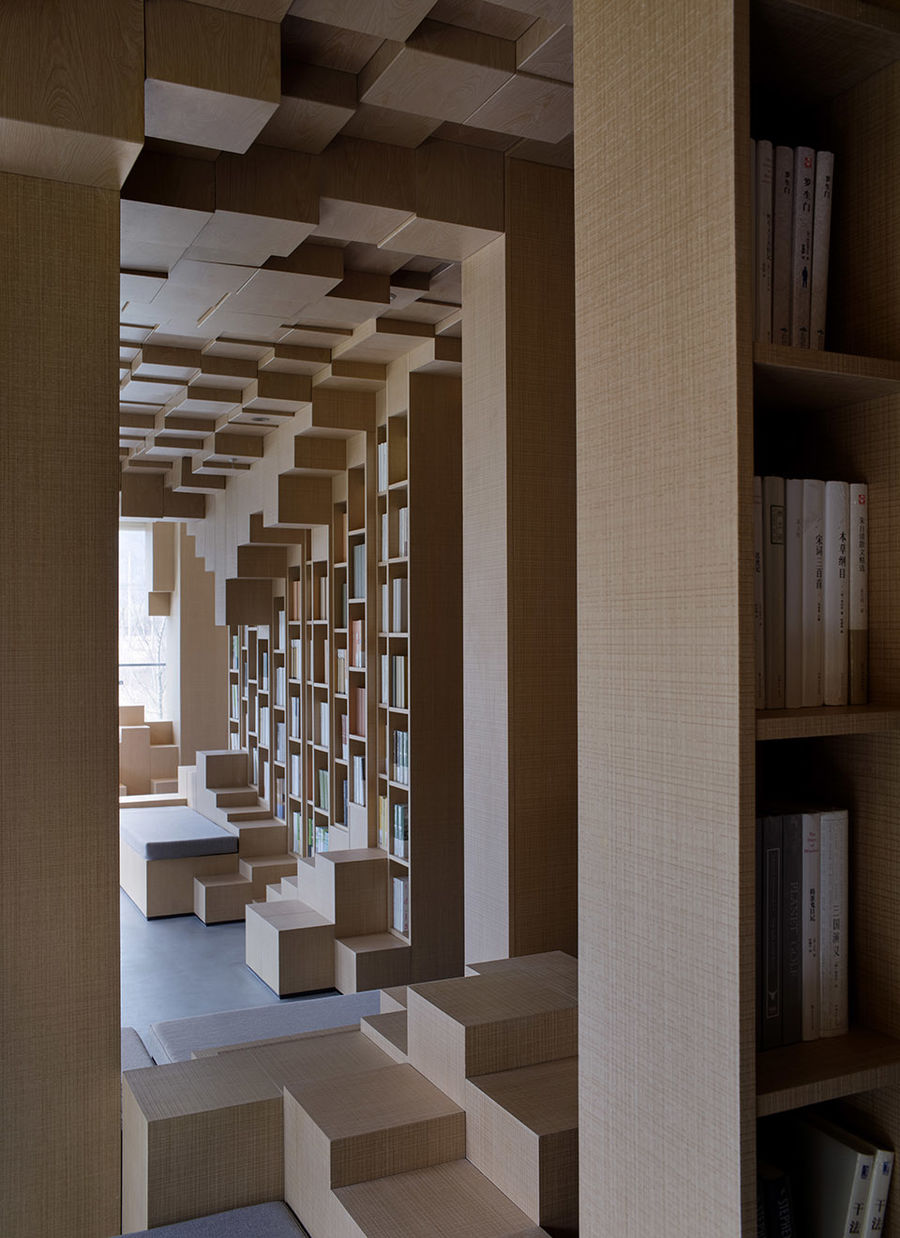
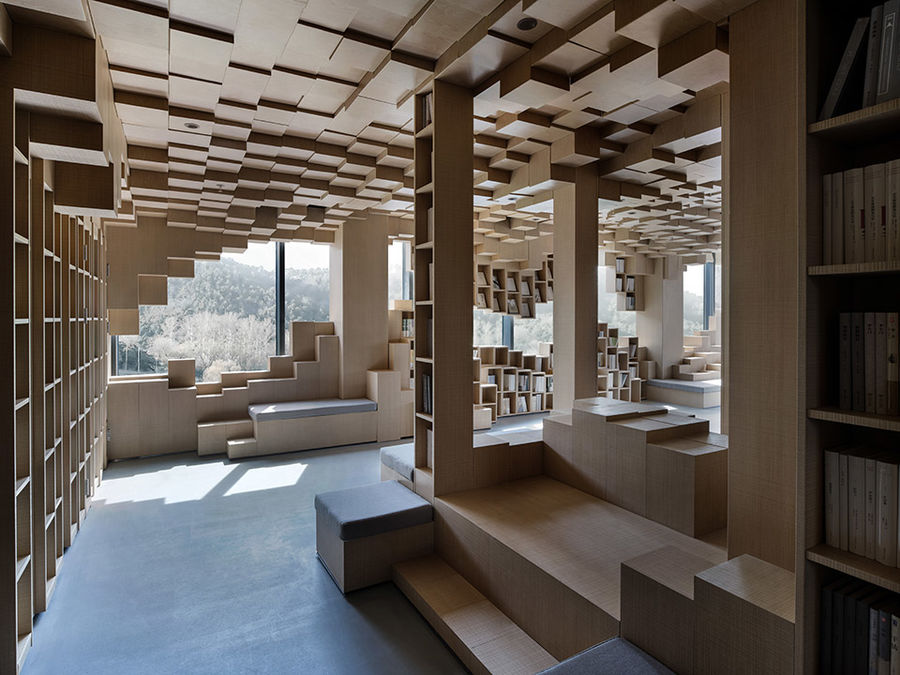
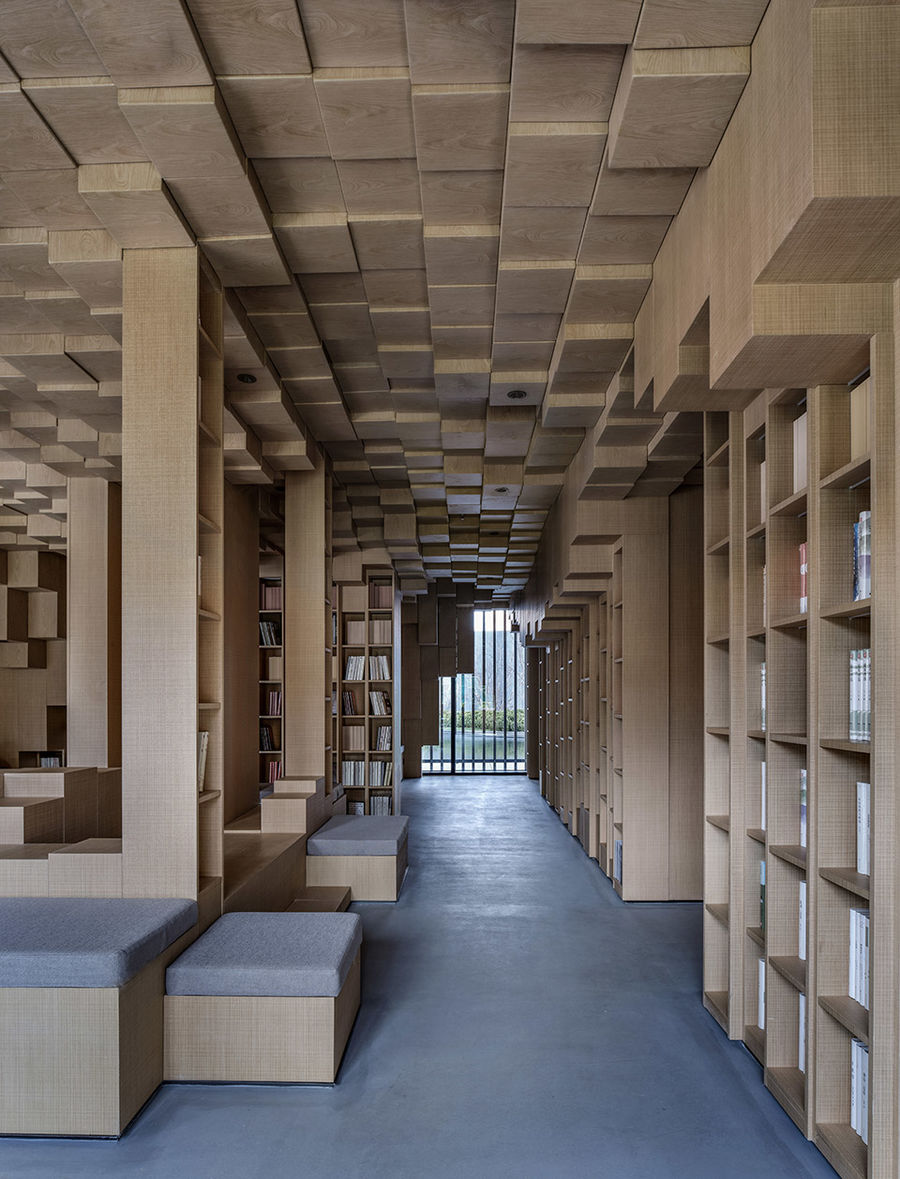
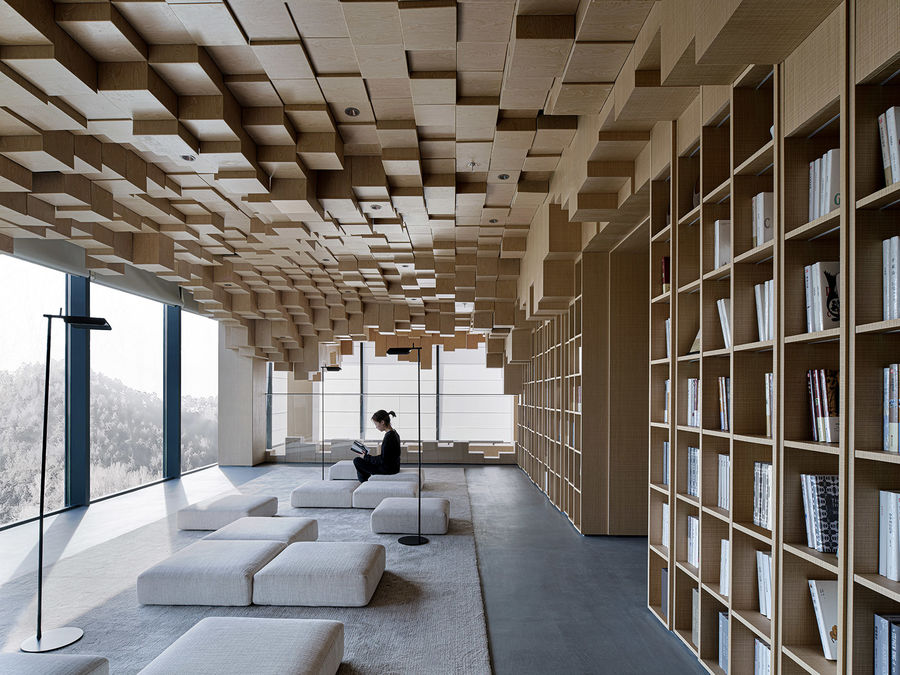
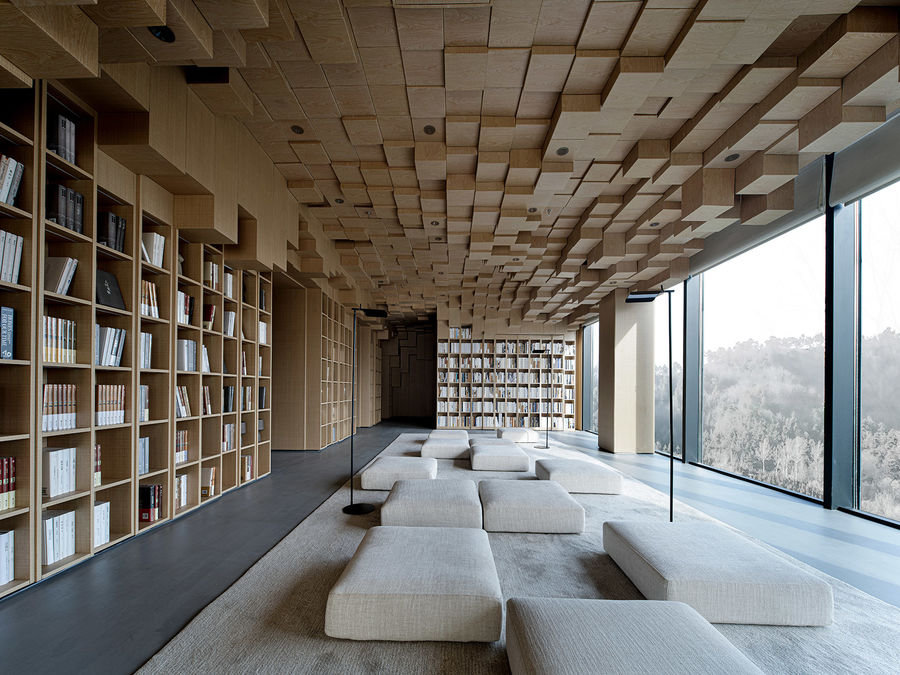
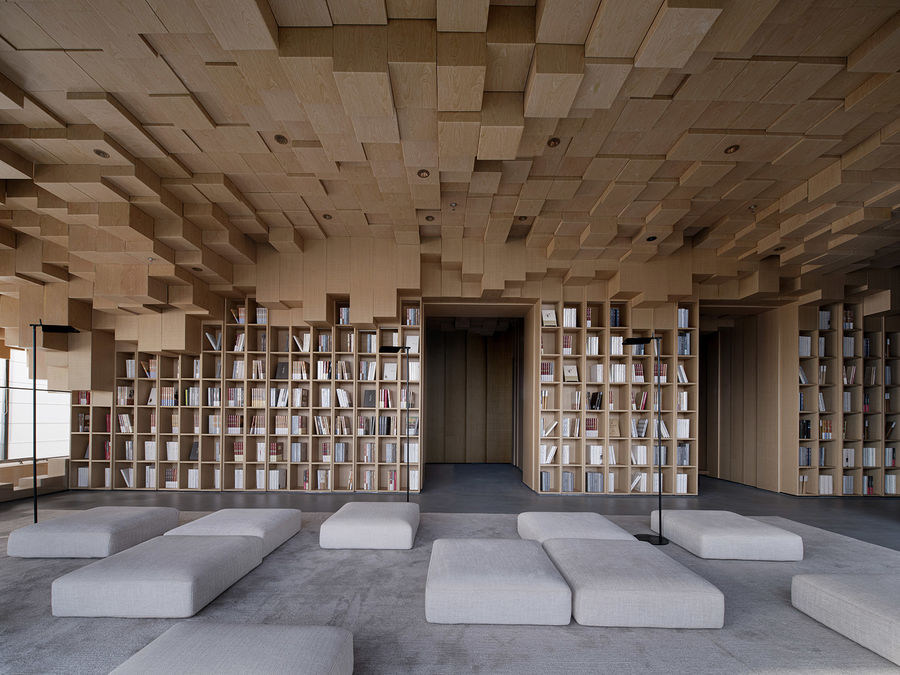
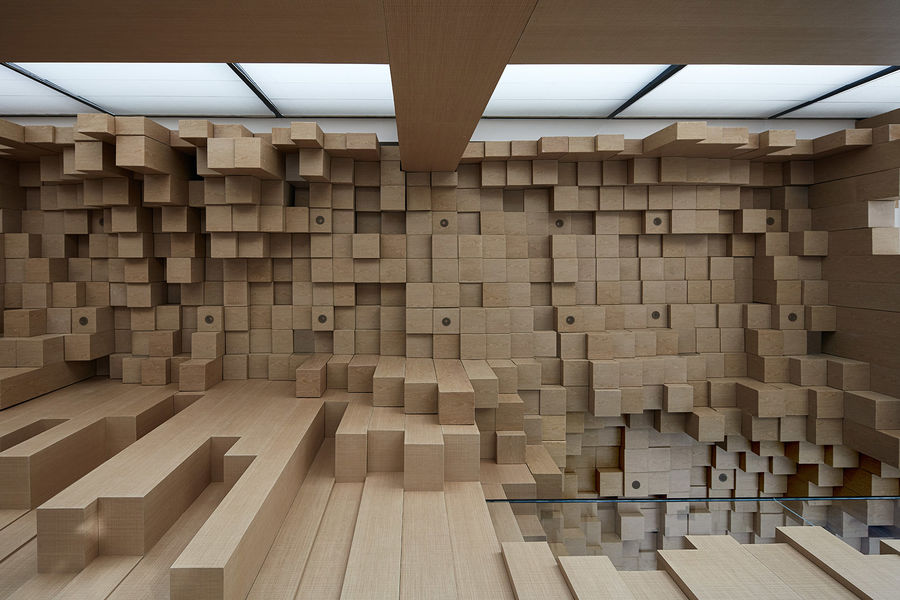
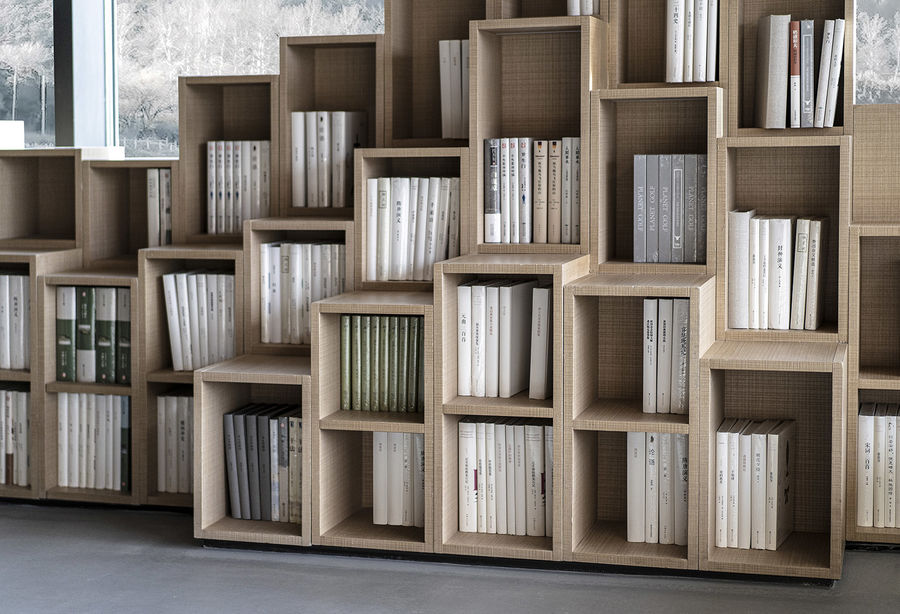
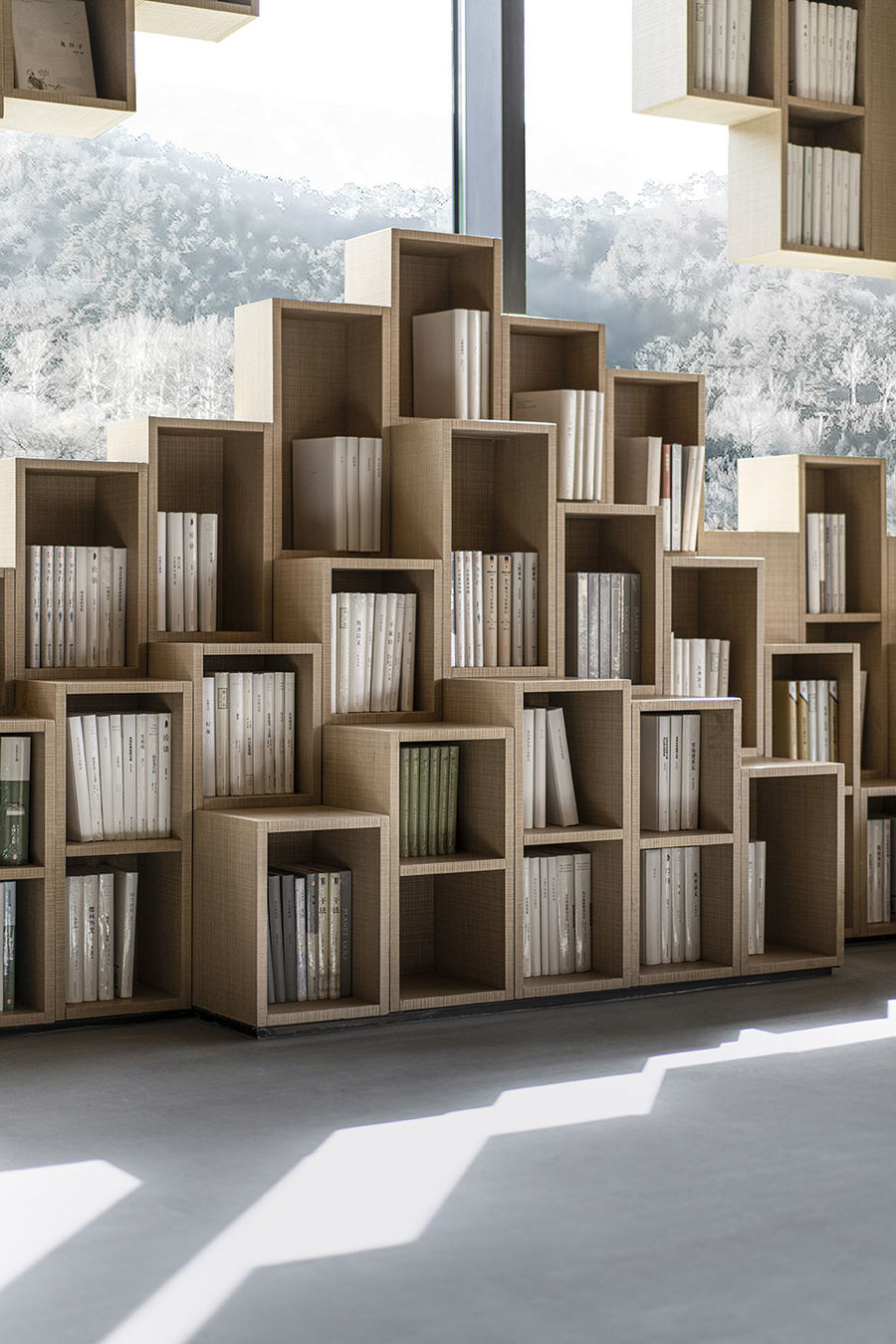
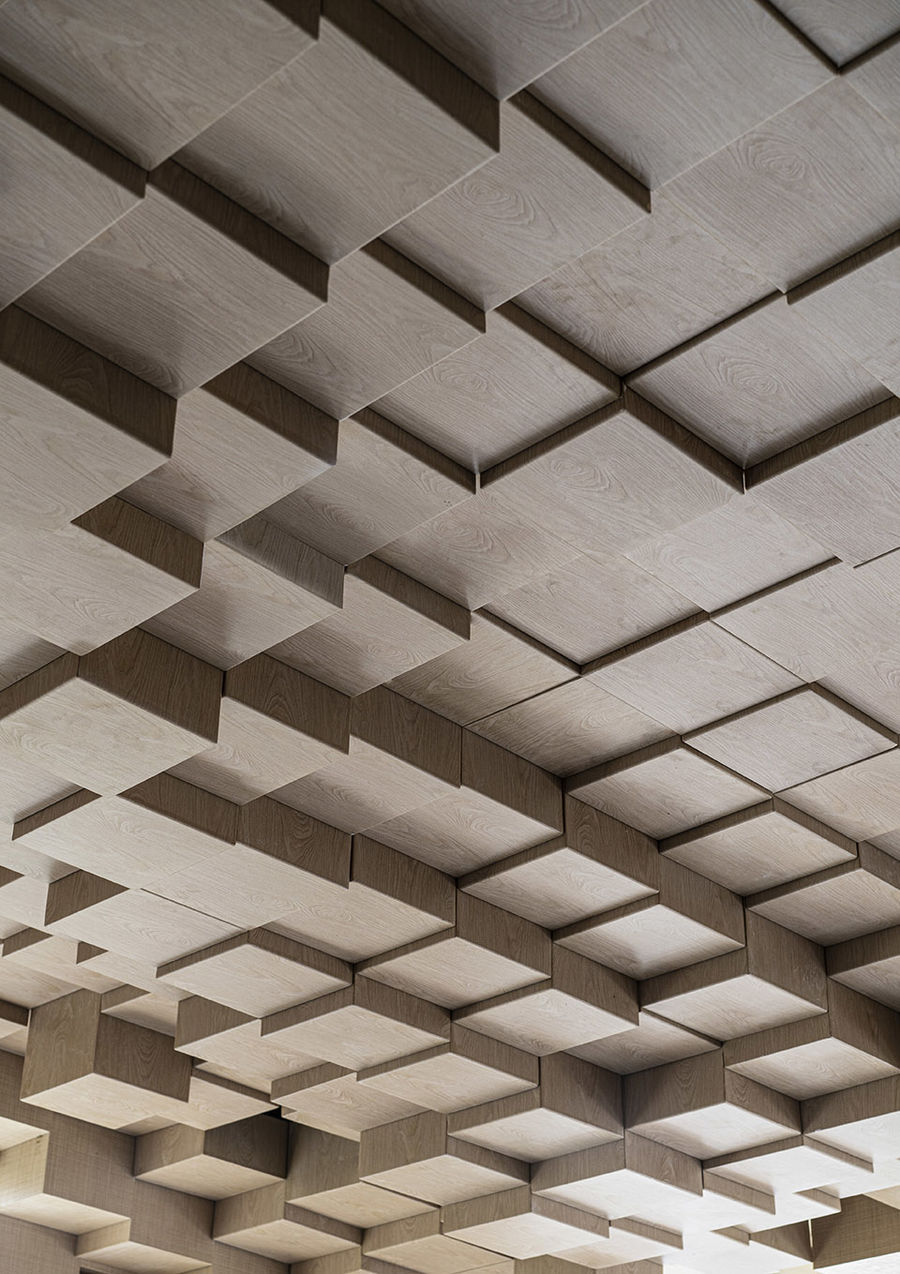
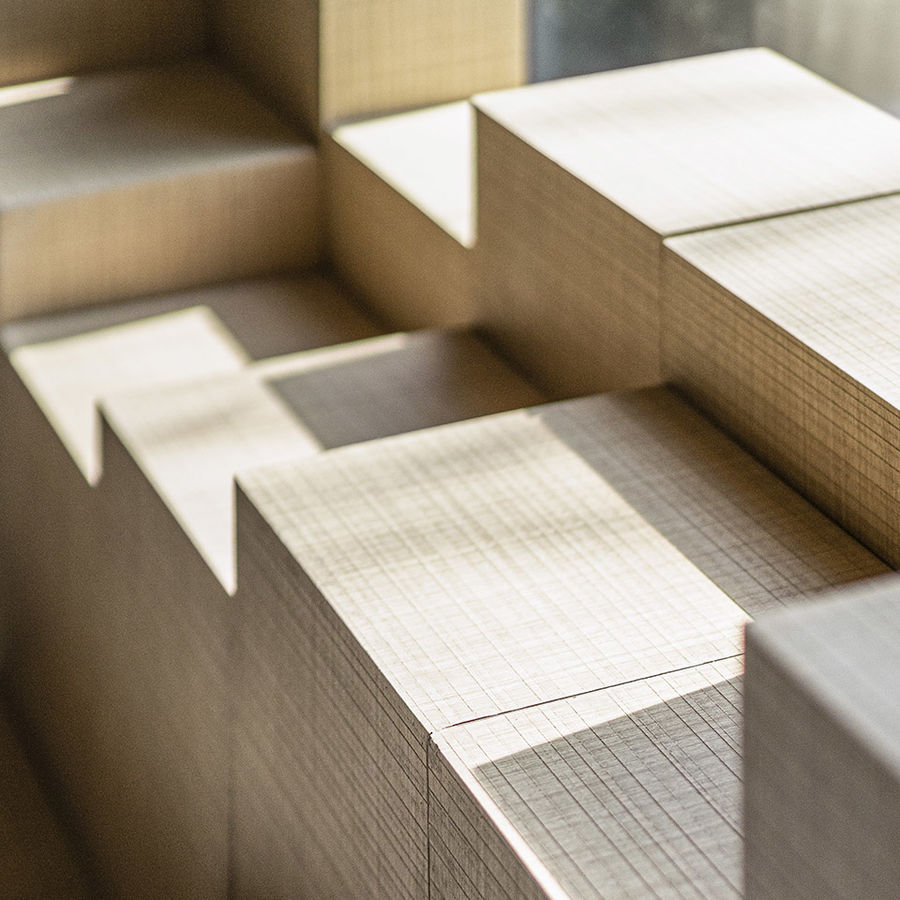
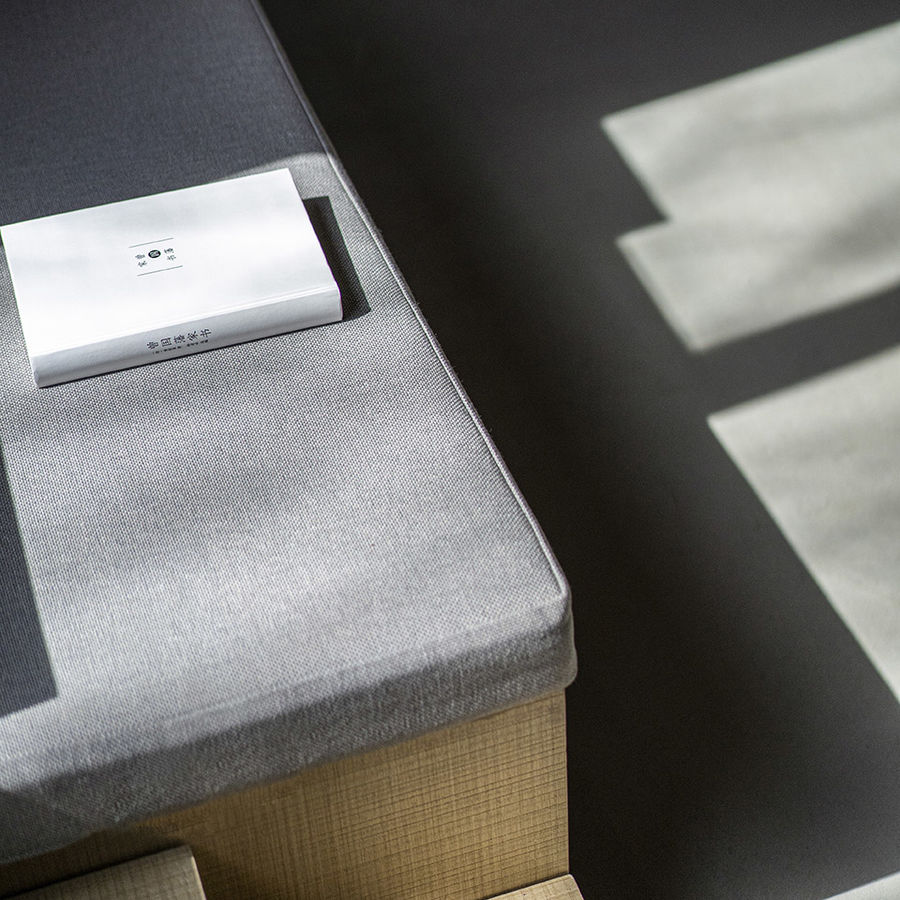
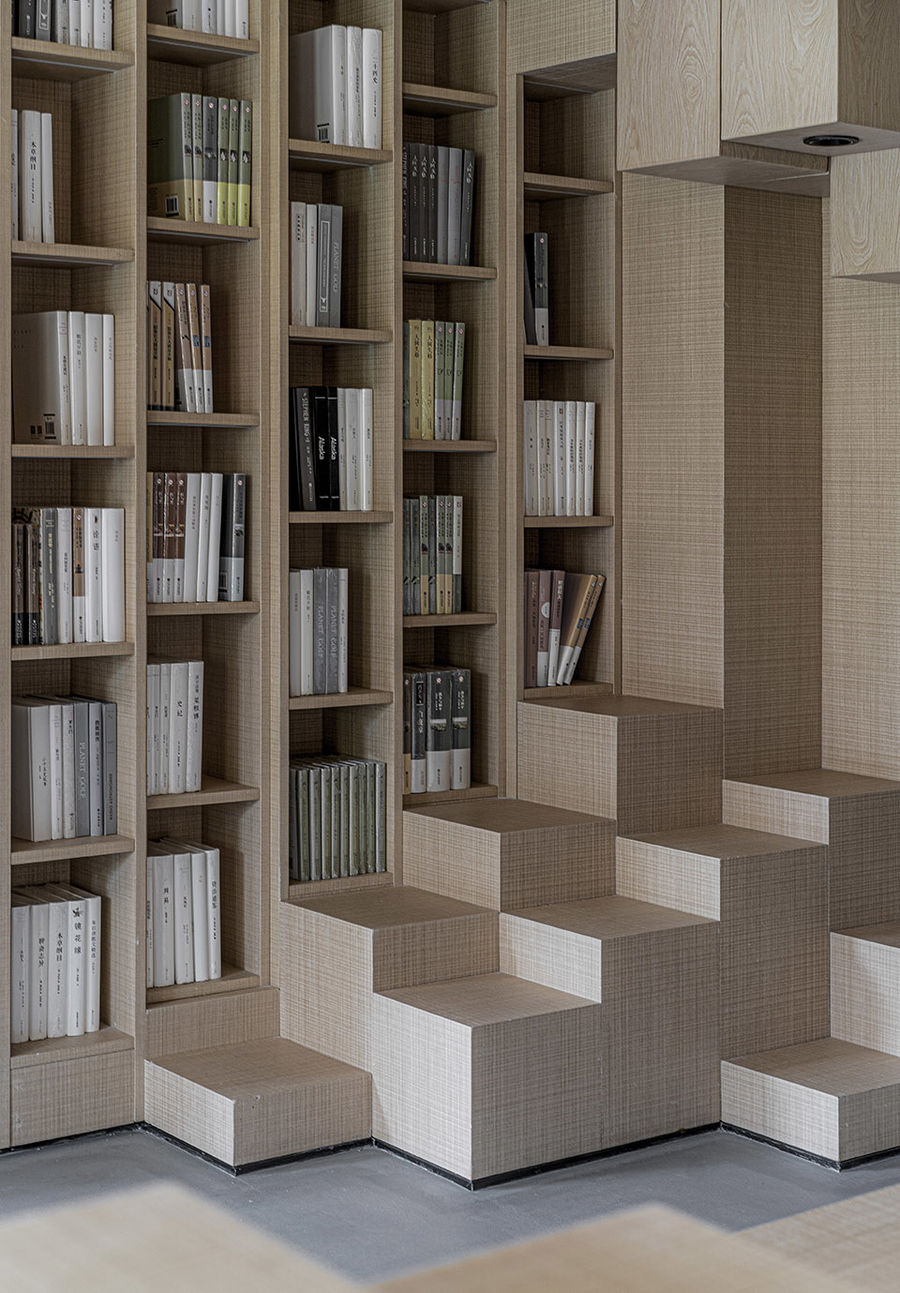
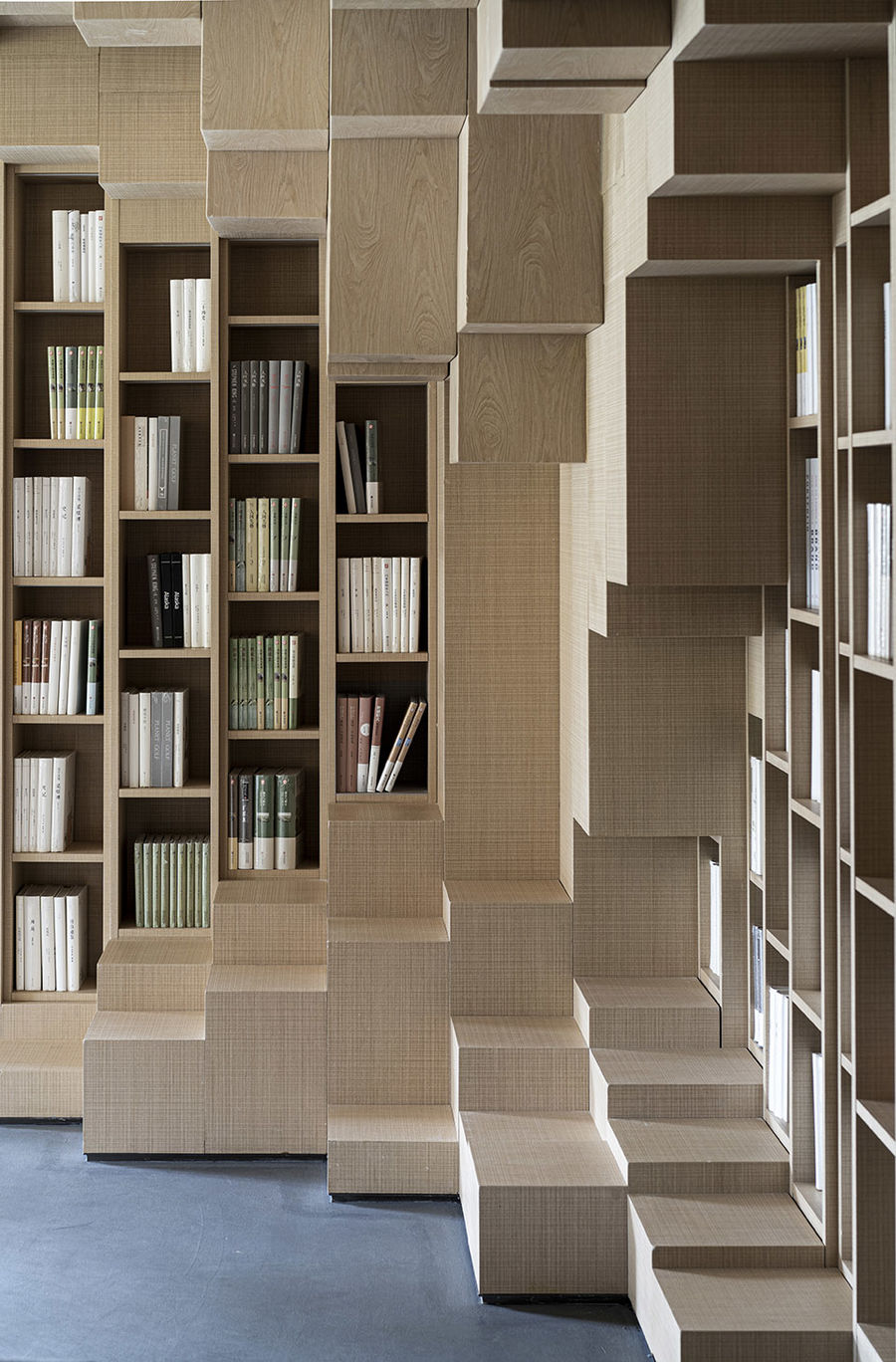
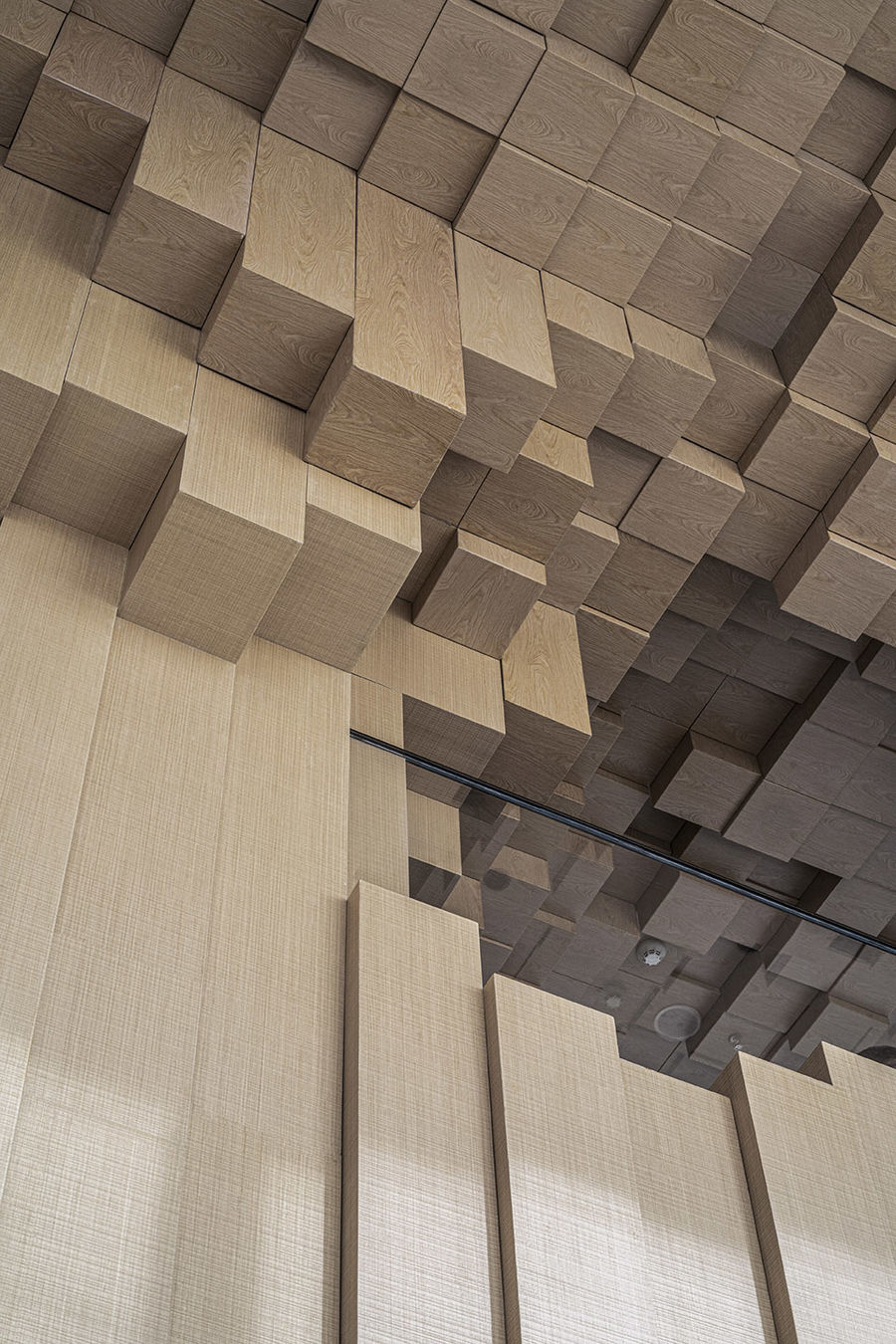



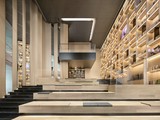







評論(0)